Or try one of the following: 詹姆斯.com, adult swim, Afterdawn, Ajaxian, Andy Budd, Ask a Ninja, AtomEnabled.org, BBC News, BBC Arabic, BBC China, BBC Russia, Brent Simmons, Channel Frederator, CNN, Digg, Diggnation, Flickr, Google News, Google Video, Harvard Law, Hebrew Language, InfoWorld, iTunes, Japanese Language, Korean Language, mir.aculo.us, Movie Trailers, Newspond, Nick Bradbury, OK/Cancel, OS News, Phil Ringnalda, Photoshop Videocast, reddit, Romanian Language, Russian Language, Ryan Parman, Traditional Chinese Language, Technorati, Tim Bray, TUAW, TVgasm, UNEASYsilence, Web 2.0 Show, Windows Vista Blog, XKCD, Yahoo! News, You Tube, Zeldman
Techolac – Computer Technology News
A weblog on emerging technology and internet news, reviews, tips for a broad range of computing technologies.10 Best Cyber Insurance Companies in 2024 1 Oct 2024, 3:34 am
In an era where data breaches and cyber threats are an increasing concern, safeguarding your business with a robust cyber insurance policy is essential. Cyber insurance not only provides a financial safety net but also ensures continuity in the face of potential disruptions. In this listicle, we’ll uncover the top 10 cyber insurance companies of 2024, explore their specialty areas, and provide practical tips to help you choose the right policy for your business.
What Is Cyber Insurance?
Cyber insurance, also known as cyber liability insurance, is a specialized type of coverage designed to protect organizations from the financial consequences resulting from cyber incidents, such as data breaches, malware attacks, and other cyber-related events. These policies typically cover a range of expenses, including legal fees, notification costs to affected individuals, data restoration, and public relations efforts to manage reputational damage. In today’s digital world, where cyber threats are increasingly sophisticated and prevalent, cyber insurance has become a vital component of a comprehensive risk management strategy for businesses of all sizes.
10 Best Cyber Insurance Companies in 2024
1. AXA XL
Specialty Areas: Comprehensive risk management, broad coverage options
AXA XL offers extensive cyber insurance policies tailored for businesses of all sizes. They provide risk management services to help identify vulnerabilities before they become issues. Their policies cover everything from data breaches to business interruption due to cyber incidents.
Example: A mid-sized retailer benefited from AXA XL’s proactive risk management by identifying and mitigating potential threats, resulting in zero cyber incidents in the past year.
2. Chubb
Specialty Areas: Financial stability, global reach
Chubb is renowned for its strong financial backing and global presence. They offer a wide range of cyber insurance products that cover data breaches, network security failures, and media liability, making them a reliable choice for multinational businesses.
Example: An international tech company praised Chubb’s swift response and comprehensive coverage during a large-scale ransomware attack, allowing them to recover quickly.
3. Zurich Insurance Group
Specialty Areas: Customized solutions, strong legal support
Zurich Insurance Group excels in providing customized cyber insurance solutions, especially for complex business structures. Their policies include extensive legal support, crucial for businesses facing regulatory challenges.
Example: A healthcare provider successfully navigated a legal quagmire post-data breach, thanks to Zurich’s robust legal assistance embedded in their coverage.
4. Hartford Financial Services
Specialty Areas: Small and medium-sized enterprises (SMEs), affordability
Hartford offers cost-effective cyber insurance solutions tailored to SMEs. Their policies cover data recovery, customer notification, and public relations efforts following a cyber incident.
Example: A startup benefited from Hartford’s affordable coverage, which included public relations support to manage the aftermath of a data breach.
5. Liberty Mutual
Specialty Areas: Dedicated cyber specialists, industry-specific solutions
Liberty Mutual boasts of a team of dedicated cyber specialists who craft policies tailored to specific industries. They focus on providing comprehensive solutions that address the unique threats faced by different sectors.
Example: A financial services firm highlighted Liberty Mutual’s industry-specific insights that helped them develop an effective cyber resilience strategy.
6. AIG (American International Group)
Specialty Areas: Advanced threat intelligence, robust incident response
AIG leverages advanced threat intelligence to offer superior cyber insurance policies. Their incident response services are top-notch, ensuring quick action and mitigation of cyber threats.
Example: An ecommerce giant commended AIG’s prompt incident response team that minimized downtime and financial losses during a cyber-attack.
7. Travelers
Specialty Areas: Comprehensive risk assessments, multi-layered protection
Travelers stands out for its comprehensive risk assessments and multi-layered protection strategies. Their policies include pre-breach planning and post-breach response, making them a well-rounded choice.
Example: A logistics company reduced its cybersecurity risks significantly after implementing Travelers’ recommended pre-breach measures.
8. Beazley
Specialty Areas: Claims expertise, breach response services
Beazley is known for its expertise in handling claims and providing superior breach response services. Their focus on rapid resolution and customer support makes them a favorite among businesses.
Example: A law firm lauded Beazley’s efficient claims process and immediate breach response, which helped them maintain client trust.
9. Hiscox
Specialty Areas: Flexible policies, strong customer service
Hiscox offers flexible cyber insurance policies that can be tailored according to business needs. Their strong customer service and support team ensure that clients receive the best possible guidance and assistance.
Example: A media company appreciated Hiscox’s flexibility in adjusting coverage as their business evolved, along with exceptional customer support.
10. Marsh
Specialty Areas: Detailed analytics, tailored risk management
Marsh provides cyber insurance that leverages detailed analytics to assess risk accurately. Their tailored risk management solutions are crafted to meet the specific needs of each business.
Example: A manufacturing firm benefited from Marsh’s detailed risk analysis and customized coverage, which resulted in better-preparedness and minimized risks.
Why Is Cyber Insurance Important?
Cyber insurance has become increasingly important in today’s digital landscape due to the ever-evolving nature of cyber threats. As cyberattacks grow in complexity and frequency, businesses are more vulnerable than ever to potential data breaches and other cyber incidents. Cyber insurance provides a vital safety net, protecting companies against financial losses, reputational damage, and potential legal liabilities. By transferring some of the risk to insurance providers, businesses can focus on strengthening their cybersecurity measures and resilience. Furthermore, having a comprehensive cyber insurance policy in place can reassure clients, stakeholders, and shareholders that a company is proactively managing its cybersecurity risks. As technology continues to advance, the need for robust cyber insurance will only continue to grow, making it an essential component of any modern business’s risk management strategy.
How Does Cyber Insurance Work?
Cyber insurance generally works by providing financial protection and support services to a company when a cyber incident occurs. It typically involves purchasing a policy from an insurer that specifies the scope of coverage, including the types of incidents covered, such as data breaches, ransomware attacks, and network failures. Premiums are determined based on various factors, including the size of the business, industry, risk exposure, and the coverage limits chosen.
When a cyber incident occurs, the insured company must notify the insurance provider promptly, detailing the nature and extent of the incident. The insurer then initiates an assessment and verification process to determine the validity of the claim. Once approved, the insurance company provides financial payouts and support services according to the policy terms, which may include covering costs related to business interruption, data recovery, legal fees, regulatory fines, and public relations efforts to manage reputational damage.
Additionally, many cyber insurance policies offer proactive services, such as risk assessments, security training, and incident response planning, to help businesses mitigate potential threats before they escalate. These services are essential in developing robust cybersecurity measures and enhancing overall resilience against future attacks. As cyber threats continue to evolve, insurers may also update their policies to address emerging risks, ensuring that businesses remain protected against new and sophisticated cyber threats.
Tips for Choosing the Right Cyber Insurance Policy
- Assess Your Needs: Identify your business’s specific vulnerabilities and choose a policy that addresses these risks adequately.
- Consider Coverage Limits: Ensure that the coverage limits are sufficient to protect against potential financial losses.
- Evaluate Response Time: Check the insurance company’s track record for response times and claims processing.
- Seek Recommendations: Look for testimonials and case studies from similar businesses.
- Understand Exclusions: Be aware of what is not covered by the policy to avoid surprises later.
Conclusion
In 2024, cyber insurance is more critical than ever for protecting your business against the rising tide of cyber threats. By choosing one of these top 10 cyber insurance companies, you can ensure that your business is well-protected and resilient. Curious about which policy suits your business best? Connect with us today to find the perfect coverage for your needs.
The post 10 Best Cyber Insurance Companies in 2024 appeared first on Techolac - Computer Technology News.
15 Best Inventory Control Software of 2024 1 Oct 2024, 3:26 am
In today’s fast-paced business world, effective inventory management can be the difference between success and failure. For small- and medium-sized enterprises (SMEs), leveraging the right inventory control software is crucial for maintaining optimal stock levels, reducing waste, and improving overall efficiency. In this guide, we’ll explore the 15 best inventory control software of 2024, offering valuable insights and practical advice to help your business thrive.
What is an Inventory Management Software?
Inventory management software is a digital tool designed to track and manage an organization’s inventory levels, orders, sales, and deliveries in real-time. This type of software helps businesses optimize their stock levels, minimize excess, and prevent stockouts, ultimately leading to improved operational efficiency and cost savings. By providing a centralized platform for inventory data, these systems enable accurate forecasting, better planning, and data-driven decision-making. Additionally, inventory management software often integrates with other business systems like accounting, point-of-sale, and supply chain management, allowing for seamless operations and enhanced visibility across the enterprise. As such, it plays a vital role in modern business strategy, ensuring that resources are utilized efficiently and customer demands are met promptly.
Why Inventory Control Software Matters
Effective inventory management is essential for SMEs looking to streamline operations, minimize costs, and maximize profitability. With the right inventory control software, businesses can automate processes, gain real-time visibility into stock levels, and make data-driven decisions that enhance productivity and customer satisfaction.
When evaluating inventory control software, consider the following criteria:
- Ease of Use: The software should have an intuitive interface that is easy to navigate.
- Scalability: Ensure the software can grow with your business.
- Integration: Look for compatibility with other tools you use, such as accounting or e-commerce platforms.
- Cost: Consider your budget and the software’s pricing structure.
- Customer Support: Reliable support is vital for addressing any issues that may arise.
Top 15 Inventory Control Software of 2024
1. Zoho Inventory
Zoho Inventory offers a user-friendly interface and powerful features tailored for SMEs. It provides multi-channel selling, order management, and real-time tracking.
Pricing: Starts at $39/month
User Feedback: 4.5/5 stars for ease of use and customer support.
2. TradeGecko
TradeGecko, now part of QuickBooks Commerce, excels in automating inventory and order management. It integrates seamlessly with various e-commerce platforms.
Pricing: Starting at $39/month
User Feedback: Praised for its robust integration capabilities.
3. Cin7
Cin7 is a versatile inventory management solution designed for growing businesses. It offers comprehensive features for order management, warehousing, and B2B e-commerce.
Pricing: Starting at $299/month
User Feedback: Users appreciate its scalability and extensive feature set.
4. Fishbowl Inventory
Fishbowl Inventory is ideal for manufacturing and warehouse management. It integrates with QuickBooks and offers advanced inventory tracking and automation.
Pricing: Custom pricing
User Feedback: Known for its powerful inventory tracking and automation features.
5. Lightspeed Retail
Lightspeed Retail is tailored for retail businesses, offering advanced POS integration, inventory tracking, and analytics.
Pricing: Starting at $69/month
User Feedback: Highly rated for its retail-focused features and customer support.
6. Unleashed
Unleashed provides real-time inventory control and reporting. It is particularly beneficial for businesses with complex supply chains.
Pricing: Starting at $299/month
User Feedback: Users commend its real-time tracking and comprehensive reporting.
7. NetSuite ERP
NetSuite ERP offers a robust inventory management system as part of its comprehensive enterprise resource planning solution. Suitable for larger SMEs, it provides extensive automation and analytics.
Pricing: Custom pricing
User Feedback: Valued for its comprehensive ERP capabilities.
8. Ordoro
Ordoro simplifies inventory management for e-commerce businesses, offering features like dropshipping, multichannel sales, and shipping label generation.
Pricing: Starting at $59/month
User Feedback: Users praise its ease of use and e-commerce integrations.
9. Veeqo
Veeqo is designed for multichannel retailers, offering inventory synchronization across various sales platforms and detailed analytics.
Pricing: Starting at $156/month
User Feedback: Known for its multichannel integration and robust analytics.
10. Odoo
Odoo provides a modular approach to inventory management, allowing businesses to customize their solutions by integrating various modules.
Pricing: Starting at $20/month per user
User Feedback: Appreciated for its flexibility and affordability.
11. SAP Business One
SAP Business One offers comprehensive inventory management as part of its ERP solution. It is suitable for larger SMEs looking for extensive customization and scalability.
Pricing: Custom pricing
User Feedback: Highly rated for its scalability and customization options.
12. Skubana
Skubana is a powerful tool for e-commerce businesses, offering centralized inventory management, order processing, and analytics.
Pricing: Custom pricing
User Feedback: Users love its centralized management and insightful analytics.
13. Clear Spider
Clear Spider offers cloud-based inventory management with real-time visibility and advanced reporting, suitable for businesses of all sizes.
Pricing: Custom pricing
User Feedback: Praised for its real-time visibility and detailed reporting.
14. QuickBooks Commerce (formerly TradeGecko)
QuickBooks Commerce integrates financial management with inventory control, providing a seamless experience for SMEs.
Pricing: Starting at $39/month
User Feedback: Users appreciate its integration with QuickBooks and ease of use.
15. Ecomdash
Ecomdash is an all-in-one tool for e-commerce businesses, offering inventory management, order processing, and shipping automation.
Pricing: Starting at $60/month
User Feedback: Highly rated for its comprehensive e-commerce features.
Comparison Table
|
Software |
Starting Price |
Key Features |
User Rating |
|---|---|---|---|
|
Zoho Inventory |
$39/month |
Multi-channel selling, order management |
4.5/5 |
|
TradeGecko |
$39/month |
Automation, e-commerce integration |
4.3/5 |
|
Cin7 |
$299/month |
Warehousing, B2B e-commerce |
4.4/5 |
|
Fishbowl |
Custom pricing |
Manufacturing, warehouse management |
4.4/5 |
|
Lightspeed |
$69/month |
Retail-focused, POS integration |
4.6/5 |
|
Unleashed |
$299/month |
Real-time tracking, reporting |
4.5/5 |
|
NetSuite ERP |
Custom pricing |
Extensive automation, analytics |
4.5/5 |
|
Ordoro |
$59/month |
Dropshipping, shipping labels |
4.3/5 |
|
Veeqo |
$156/month |
Multichannel sync, analytics |
4.5/5 |
|
Odoo |
$20/month |
Modular, customizable |
4.4/5 |
|
SAP Business One |
Custom pricing |
Customization, scalability |
4.5/5 |
|
Skubana |
Custom pricing |
Centralized management, analytics |
4.4/5 |
|
Clear Spider |
Custom pricing |
Real-time visibility, reporting |
4.3/5 |
|
QuickBooks Comm. |
$39/month |
Financial integration |
4.4/5 |
|
Ecomdash |
$60/month |
E-commerce automation |
4.4/5 |
How To Choose Inventory Management Software
When choosing inventory management software, it’s crucial to consider several key factors to ensure the solution aligns with your business needs. First, evaluate the specific requirements of your business, such as the size of your inventory, the complexity of your supply chain, and the scale of your operations. Understanding these needs will help narrow down software options that are proportionate and beneficial. Additionally, assess the software’s integration capabilities with existing systems, such as e-commerce platforms or accounting tools, to ensure seamless data flow across all business processes. User-friendliness is another important consideration, as a complicated interface can lead to inefficiencies and errors. Ensure the solution offers adequate support and training materials to aid in adoption. Finally, consider the scalability of the software to accommodate future growth and expansion. Investing in a flexible solution that can evolve with your business will provide long-term advantages and cost-effectiveness.
Benefits of using Inventory Management Software
Inventory management software offers several benefits that can significantly enhance the efficiency and productivity of a business. One of the primary advantages is the ability to track inventory levels in real-time, providing businesses with up-to-date information that helps avoid overstocking or stockouts. This real-time data allows for more accurate demand forecasting, leading to better inventory planning and resource allocation.
Moreover, inventory management software streamlines order fulfillment processes. With automation features, businesses can reduce manual tasks, minimize human error, and improve order accuracy. This efficiency leads to faster shipment times, enhancing customer satisfaction and loyalty. In addition to order management, these software solutions often integrate with other business systems, such as accounting, point-of-sale, and e-commerce platforms, for seamless operation across various departments.
Another significant benefit is cost reduction. By optimizing inventory levels and improving supply chain efficiency, businesses can reduce storage costs, minimize waste, and ultimately improve their bottom line. Enhanced reporting and analytics features further aid decision-making, allowing management to identify trends, spot bottlenecks, and make data-driven strategic choices for future growth.
Security and data integrity are also enhanced with inventory management software. With robust access controls and audit trails, businesses can safeguard their data and ensure that sensitive information is only accessible to authorized personnel. This not only protects business interests but also ensures compliance with industry standards and regulations.
Overall, the adoption of inventory management software is instrumental in helping businesses stay competitive in a rapidly changing market environment, supporting their growth and operational excellence.
What Does Inventory Management Software Cost?
The cost of inventory management software can vary widely based on several factors, including the features offered, the complexity of the software, and the size of the business. Many providers offer tiered pricing models starting with basic plans that are more affordable for small businesses, allowing them to benefit from essential features like inventory tracking and order management. For larger organizations with more complex needs, pricing tends to increase significantly as more advanced features such as enterprise resource planning (ERP) integration, advanced analytics, and custom reporting capabilities are included.
Subscription-based models are common, with prices ranging from as low as $20 per month for simplified solutions to upwards of $500 per month for comprehensive packages tailored to large-scale enterprises. Some providers also offer one-time licensing fees, although cloud-based solutions with ongoing subscriptions have become more prevalent due to their scalability and ease of access. Additionally, custom pricing is typically provided by vendors for tailored solutions, ensuring the software meets the specific requirements of the business.
It’s important for businesses to weigh the costs against the potential return on investment, taking into account the increased efficiency, reduced errors, and improved inventory accuracy that these systems offer. Businesses should also consider any hidden costs, such as implementation, training, and ongoing support fees, when evaluating the total cost of ownership. Making a well-informed decision will help ensure the chosen solution delivers maximum value while remaining within budget constraints.
Conclusion
In conclusion, selecting the right inventory management software is a critical decision that can significantly impact a business’s operational efficiency and financial health. By carefully weighing the features, integration capabilities, scalability, and costs associated with each option, businesses can align their choice with their strategic goals and operational needs. Implementing a robust inventory management system not only streamlines processes and enhances data accuracy but also helps to future-proof the organization against industry changes. As markets continue to evolve and customer expectations advance, having an efficient and dependable inventory management solution will support sustained growth and competitive advantage. By investing in an appropriate system, businesses are better equipped to navigate challenges, optimize resources, and achieve long-term success.
The post 15 Best Inventory Control Software of 2024 appeared first on Techolac - Computer Technology News.
10 Best Data Visualization Tools in 2024 1 Oct 2024, 3:13 am
Data visualization has become an indispensable part of modern business decision-making. Whether you’re a data analyst, business owner, or marketer, the ability to transform raw data into insightful visuals can significantly impact your strategy and outcomes. This listicle will guide you through the best data visualization tools available in 2024, designed to help you make well-informed decisions.
What is Data Visualization?
Data visualization refers to the graphical representation of information and data. By using visual elements like charts, graphs, and maps, data visualization tools provide an accessible way to see and understand trends, outliers, and patterns in data. In a world awash with data, these tools are essential for making data-driven decisions and communicating complex information clearly and effectively. From pie charts and line graphs to more complex heat maps and interactive dashboards, data visualization encompasses a wide range of techniques and tools, each suited to different purposes and datasets. As we move further into 2024, the importance of harnessing these tools to extract meaningful insights from data cannot be overstated.
What are Data Visualization Tools?
Data visualization tools are software applications designed to help users create visual representations of data. They offer a variety of features, including customizable templates, interactive dashboards, and advanced analytics capabilities. These tools simplify the process of transforming raw data into meaningful visuals, making it easier to comprehend large datasets quickly and efficiently. They are particularly valuable in business settings, where making informed decisions swiftly is crucial. By visualizing data, organizations can identify trends, detect anomalies, and uncover hidden patterns that might not be immediately obvious through numerical analysis alone. In 2024, the landscape of data visualization tools is more diverse and innovative than ever, with options catering to different expertise levels and industry-specific needs.
Before we dive into the list, let’s outline the criteria used to select these tools:
- Ease of Use: User-friendliness and an intuitive interface.
- Customization: The ability to create and customize a wide range of charts and graphs.
- Integration: Compatibility with various data sources and other software.
- Performance: Speed and efficiency in handling large datasets.
- Support & Community: Availability of customer support and an active user community.
- Pricing: Cost-effectiveness, considering both feature set and budget constraints.
10 Best Data Visualization Tools
1. Tableau
Overview: Tableau is renowned for its robust range of features and ease of use, making it a favorite among data analysts and business professionals. It offers extensive customization options and integrates seamlessly with numerous data sources.
Pricing: Starts at $70 per user/month.
User Feedback: “Tableau has transformed our data analytics process, allowing us to visualize complex data with ease.” – Sarah, Data Analyst
2. Power BI
Overview: Power BI by Microsoft offers a powerful suite of business analytics tools. It stands out for its integration with Microsoft Office and other popular software, making it a versatile choice for businesses of all sizes.
Pricing: Starts at $9.99 per user/month.
User Feedback: “Power BI’s seamless integration with our existing Microsoft tools made it an easy choice for us.” – John, Business Owner
3. Qlik Sense
Overview: Qlik Sense is highly regarded for its associative data model, which allows users to explore data without being confined to a predefined path. It offers both cloud and on-premises solutions.
Pricing: Custom pricing based on organizational needs.
User Feedback: “Qlik Sense provides incredible flexibility in data exploration, and its associative model is a game-changer.” – Lisa, Data Scientist
4. Google Data Studio
Overview: Google Data Studio is a free tool that brings Google’s powerful data visualization capabilities to the forefront. It supports various data sources and offers rich customization options.
Pricing: Free.
User Feedback: “The best part about Google Data Studio is its cost-efficiency and integration with other Google services.” – Mark, Digital Marketer
5. Looker
Overview: Looker, now part of Google Cloud, provides advanced data exploration and visualization features. It is particularly strong in its ability to create custom applications on top of its platform.
Pricing: Custom pricing based on organizational needs.
User Feedback: “Looker’s flexibility in building custom data applications has been invaluable for our team.” – Alexis, Marketing Manager
6. D3.js
Overview: D3.js is a JavaScript library for creating dynamic and interactive data visualizations in web browsers. It offers unparalleled flexibility but requires a good grasp of coding.
Pricing: Free.
User Feedback: “For those with coding skills, D3.js offers unmatched control and creativity in data visualization.” – Ravi, Web Developer
7. Sisense
Overview: Sisense is an end-to-end data analytics platform known for its ability to handle large datasets and deliver powerful insights. It focuses on embedding analytics into customer-facing applications.
Pricing: Custom pricing based on organizational needs.
User Feedback: “Sisense’s ability to manage and analyze large datasets has been crucial for our business intelligence needs.” – Emma, Business Intelligence Analyst
8. Chartio
Overview: Chartio offers a user-friendly interface and powerful data visualization capabilities. It is particularly popular among startups and small businesses for its affordability and ease of use.
Pricing: Starts at $40 per user/month.
User Feedback: “Chartio is straightforward and affordable, making it perfect for our startup.” – Daniel, Startup Founder
9. Zoho Analytics
Overview: Zoho Analytics is part of the larger Zoho ecosystem, providing a comprehensive suite of data analytics and visualization tools. It supports a wide range of data sources and offers extensive customization.
Pricing: Starts at $24 per month for 2 users.
User Feedback: “Zoho Analytics’ integration with other Zoho products makes it a seamless addition to our workflow.” – Priya, Operations Manager
10. Infogram
Overview: Infogram is known for its ease of use and visually appealing templates, making it ideal for marketers and content creators. It supports real-time data updates and interactive features.
Pricing: Starts at $19 per month.
User Feedback: “Infogram’s beautiful templates and ease of use have elevated our data presentation.” – Maria, Content Creator
Comparison Table
|
Tool |
Ease of Use |
Customization |
Integration |
Pricing |
User Feedback |
|---|---|---|---|---|---|
|
Tableau |
9/10 |
High |
High |
$70/user/month |
Transformed our data analytics |
|
Power BI |
8/10 |
High |
Very High |
$9.99/user/month |
Seamless integration |
|
Qlik Sense |
7/10 |
High |
High |
Custom |
Incredible flexibility |
|
Google Data Studio |
9/10 |
Medium |
High |
Free |
Cost-efficient |
|
Looker |
7/10 |
High |
High |
Custom |
Invaluable flexibility |
|
D3.js |
6/10 |
Very High |
Medium |
Free |
Unmatched control |
|
Sisense |
7/10 |
High |
High |
Custom |
Crucial for big data |
|
Chartio |
8/10 |
Medium |
High |
$40/user/month |
Straightforward and affordable |
|
Zoho Analytics |
8/10 |
High |
High |
$24/month for 2 |
Seamless addition |
|
Infogram |
9/10 |
Medium |
Medium |
$19/month |
Beautiful templates |
Why Is Data Visualization Important for Businesses?
Data visualization plays a vital role in modern business operations by transforming complex datasets into easy-to-understand visual formats. This process enables decision-makers to quickly grasp insights and identify trends, facilitating evidence-based strategies and actions. By using visualizations, businesses can unearth patterns that may not be immediately obvious through traditional data analysis methods. As a result, companies can enhance their competitive edge by making informed decisions more efficiently. Additionally, data visualization caters to different audiences, breaking down barriers in data comprehension regardless of a person’s technical expertise, thus fostering greater collaboration across departments. In an era where data is overflowing, the ability to visualize and interpret this information is indispensable for driving growth, innovation, and operational efficiency.
Why is Data Visualization Important?
Data visualization not only enhances understanding but also improves communication both within and outside an organization. By presenting data in a visual format, it allows for more engaging storytelling, which can be crucial for pitching to potential investors, presenting to clients, or conducting internal reviews. Visualizations help simplify the communication of complex data points and convey the significance of the data in an attractive and concise manner. This can lead to more effective meetings, clearer reports, and more impactful presentations, thereby making widespread data-driven collaboration possible. Furthermore, as data continues to grow in volume and complexity, the skills of creating and interpreting data visualizations are becoming increasingly important, equipping businesses and individuals with the necessary tools to navigate a data-centric world.
Benefits of Data Visualization Tools
Data visualization tools provide numerous advantages that can significantly enhance business intelligence and decision-making processes. Firstly, they enable the quick and effective processing of large volumes of data, allowing users to uncover insights and patterns that might otherwise go unnoticed. This capability aids in proactive decision-making and more accurate forecasting. Secondly, these tools help improve productivity by streamlining data analysis workflows. Instead of spending countless hours sifting through complex datasets, users can quickly generate visual reports and dashboards, saving time and resources. Additionally, data visualization tools foster enhanced collaboration within organizations. By providing a common platform for data analysis, team members can easily share insights and interpretations, leading to more aligned and informed strategies. Lastly, with the growing importance of big data, these tools offer scalability and adaptability, ensuring that businesses can manage increasing data volumes without compromising on performance or accuracy.
Conclusion
Data visualization tools are indispensable in today’s data-driven world, providing businesses with scalable and effective solutions to interpret and leverage their data. As businesses increasingly rely on data analytics to drive success, the choice of tools becomes critical in shaping how insights are gathered, shared, and acted upon. Selecting the right tool involves balancing factors such as ease of use, cost, integration capabilities, and the level of customization needed. Each tool offers unique strengths and potential limitations, which must be aligned with the specific needs and goals of the business. By investing in the right data visualization solutions, organizations not only boost operational efficiency but also foster a culture of data-driven decision-making, enabling them to thrive in an ever-evolving marketplace.
The post 10 Best Data Visualization Tools in 2024 appeared first on Techolac - Computer Technology News.
12 Best Appointment Scheduling Software in 2024 30 Sep 2024, 4:05 pm
Best Appointment Scheduling Software will be discussed in this article. Making and managing appointments is the most difficult problem that all businesses and professionals face these days. Appointment scheduling software is the best solution we’ve discovered for this. Yes, this is the best answer to all of your appointment-related problems; everything from scheduling an appointment to canceling it is as simple as a few mouse clicks.
You won’t have to be irritated if customers or other persons fail to show up for planned appointments now that you have control over them, which will also reduce your productivity. We thoroughly researched some of the best appointment scheduling software in 2023 for you since there is a glut of this software on the market. But first, let us widen our grasp of the appointment schedulers that are presently available on the market.
What is Appointment Scheduling Software?
Appointment scheduling software is a platform that allows the use of technologies that ease the process of scheduling, managing, rescheduling, and even monitoring corporate appointments. Users/clients may use the program to schedule appointments, transfer money online, and set up reminders to assist them fulfill their commitments.
It also helps with scheduling, branding, and marketing. When deployed correctly, these technologies have the potential to boost client loyalty and build trust among prospective consumers. They enhance the overall performance of the company. The best online appointment scheduling software will be a bright light for your organization.
Appointment scheduling software, regardless of business size, may be quite useful if selected wisely and after analyzing the enterprise’s needs. Additionally, incorporating a printable calendar alongside this software can provide a quick, visual reference for all scheduled appointments, enhancing organization and efficiency.
Consider the following factors when selecting appointment-setting software for your business’s use:
The company’s size: Knowing the size of the company is important since there is software available on the market that is designed specifically for small or big businesses.
The budget: When completing the accounting, it is always a good idea to keep the budget in mind. selecting appointment software that is too cheap will result in the elimination of certain functionality, while selecting one that is too costly will disturb your bank account balance. As a result, it’s a good idea to maintain a well-thought-out budget with space for tiny alterations handy.
Your software line: There are several programs available that cater to various sectors. For example, an appointment planner designed for the health and medical sectors would not operate effectively in the hotel or fashion industries. As a result, before investing in appointment scheduling software, it is critical to do market research.
Customer Reviews and Ratings: Just as you wouldn’t buy apparel without perusing customer reviews, it is illogical to acquire appointment scheduling software without conducting the requisite research. When deciding on the best appointment scheduling software for the business, consider what previous customers have said and how they evaluated the program.
12 Best Appointment Scheduling Software in 2024
In this post, you will learn about the Best Appointment Scheduling Software, which are listed below.
1. Simplybook.me
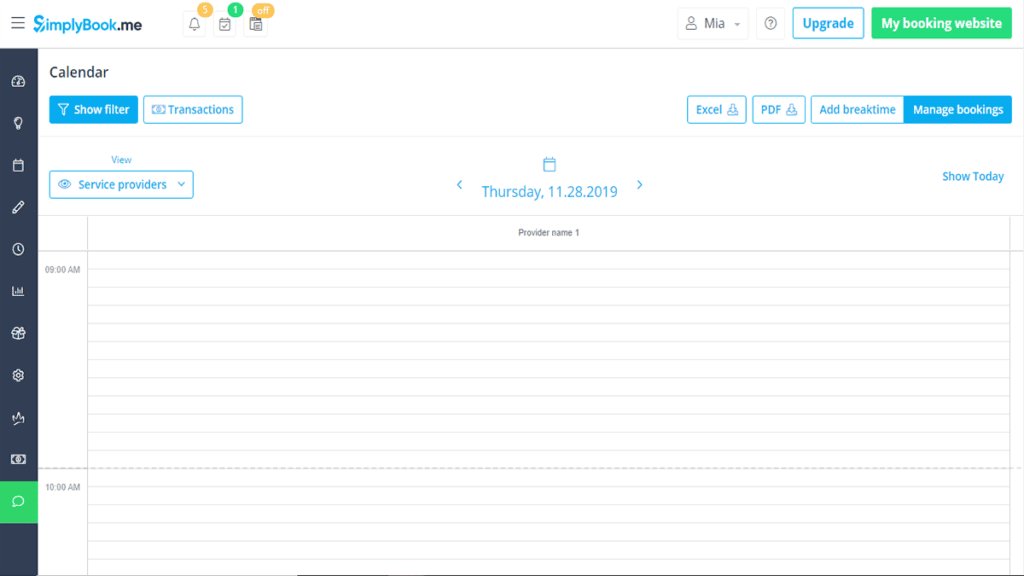
Simplybook.me is yet another fantastic online appointment scheduling software that provides the most convenient way to book an appointment online. Nothing could be more self-explanatory than this word. Because of its superior servers, you may effectively make an appointment via Facebook without visiting the official website. You can now schedule and manage appointments like a pro.
2. Acuity Scheduling

As an online appointment planner, Acuity Scheduling expedites the real-time availability of slots and their bookings. When compared to human scheduling, software reduces the risk of mistakes such as information overlap or mismatch, as well as failing to send reminders, which result in no-shows and time loss. The program blocks calendar dates once an appointment is booked for that time slot, and it is mobile-friendly. Furthermore, it leads to happy customers and emphasizes the importance of providing the finest.
3. TimeTap Online Scheduling

We offer a solution for all appointment-based businesses out there. There is just one thing you require: TimeTap. This confusing software is easy to use since it is user-friendly and customer-focused. And, as the name suggests, TimeTap undoubtedly saves time owing to its straightforward user integration. TimeTap is intended for those who struggle with technology. You can now manage your appointments more conveniently.
4. SuperSaas
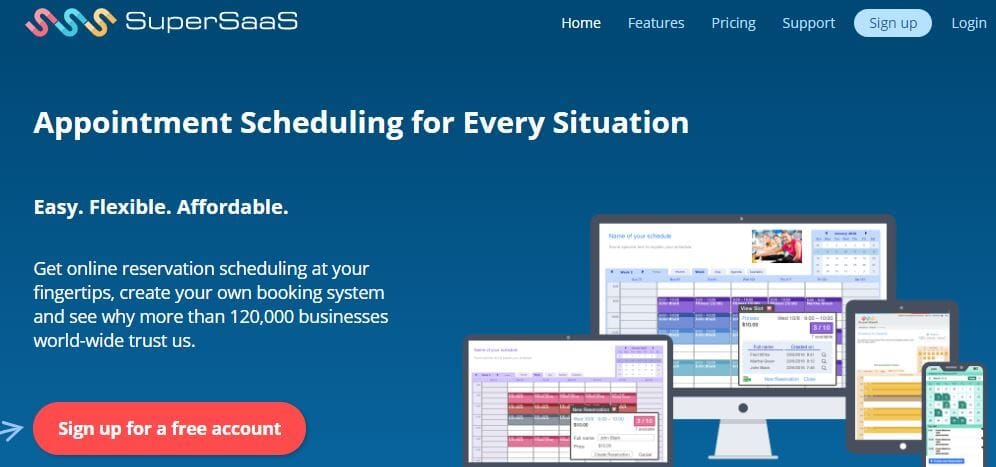
This appointment scheduling software is among the most user-friendly and customizable on the market. Scheduling appointments is now simple. You can quickly create waiting lists, personalize forms, and sync your calendars with the aid of this wonderful software without having to worry about making revisions in the case of cancellations and rescheduling. Also you may use this program to remember your customers and keep in touch with them at all times. You may add your website, establish pricing limitations, and even eliminate using email to find out about appointments thanks to the software’s support for 34 languages.
5. ScheduleOnce
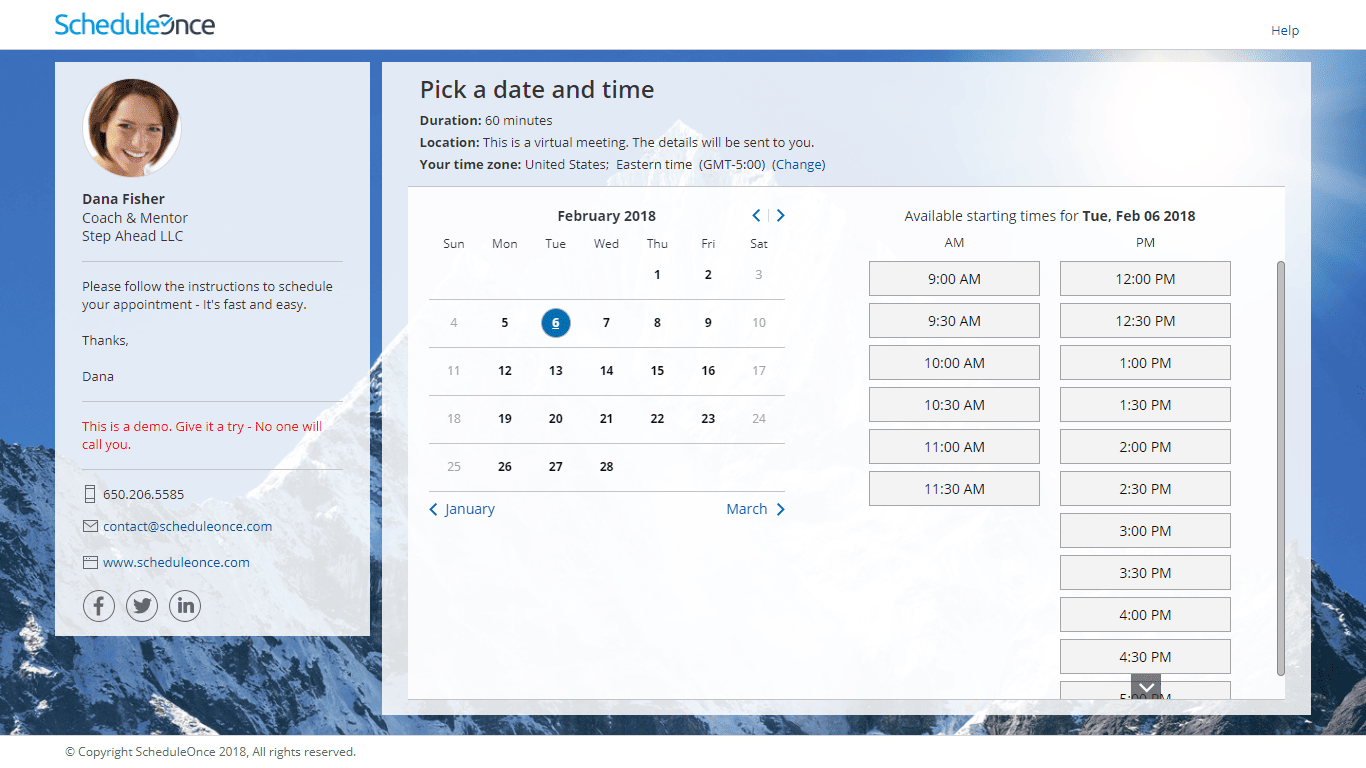
Despite the name, I am certain that you will acquire infinite bookings with this fantastic appointment scheduling software. The easy-to-use program allows you to easily book meetings and appointments, and it also interacts with personal calendars. The software supports organizations in special circumstances and dimensions that would otherwise need a large amount of human labor. You may use this appointment scheduling software to help your company expand and flourish as much as possible.
6. Bookeo

Bookeo is another appointment-scheduling software that has all of the features required for managing corporate appointments. If you are a person whose services are dependent on appointments, this program is for you. This appointment maker is versatile and serves a broad variety of sectors, including salons, professional service organizations, car washes, and hospitals, among many others. The program is reasonably priced and definitely worth purchasing. Your customers will find online appointment booking and rescheduling quite easy to use. Calendar administration is no longer a challenging task.
7. Calendly
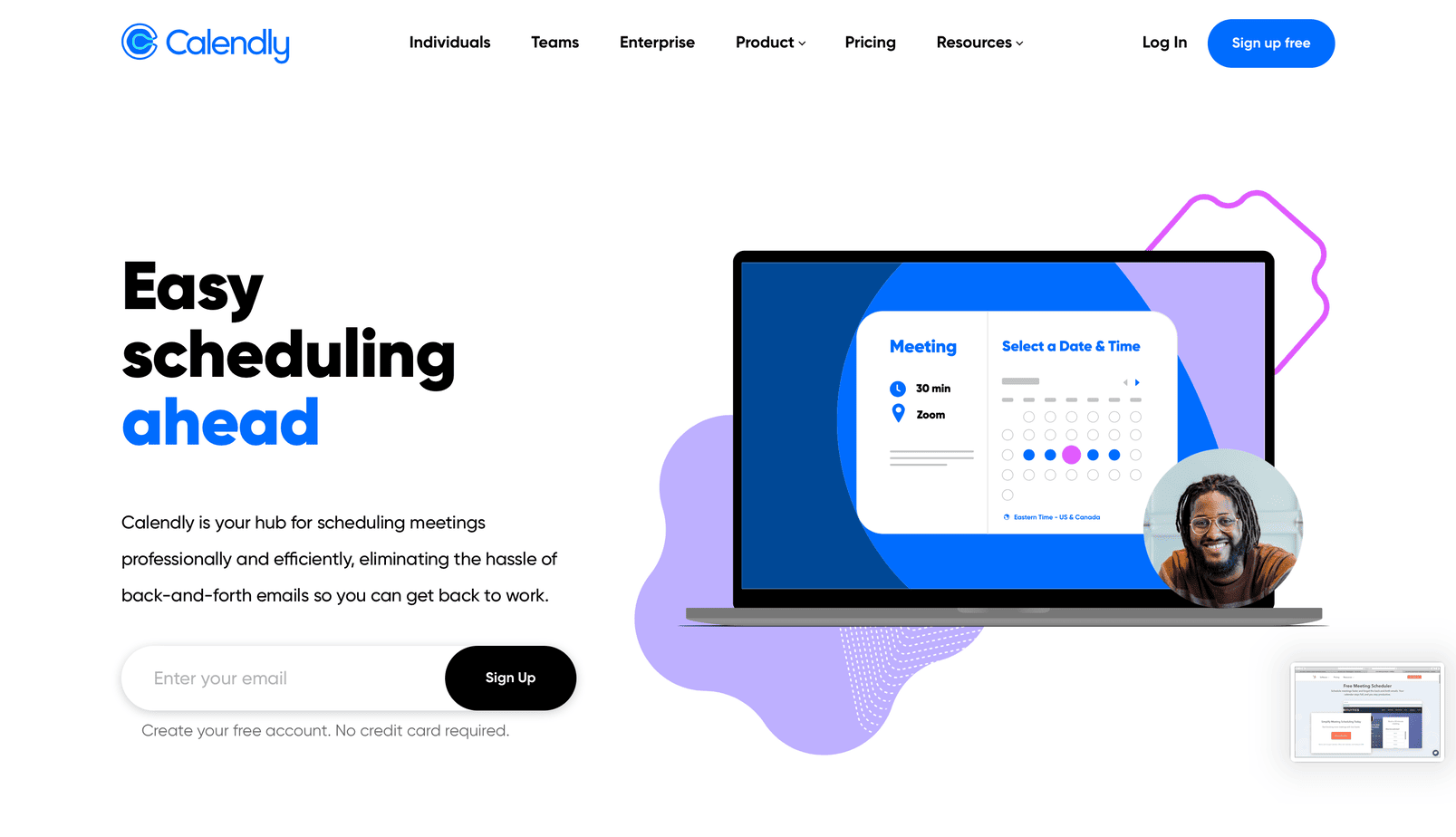
Calendly is a simple, user-friendly appointment scheduling solution for your business. To improve service quality, the software prioritizes time savings and sales promotion. It ensures that bookings made by new customers are confirmed as soon as they are made. The system is precisely built and ensures that customers show up by sending them reminders on a regular basis. Client loss due to phone and email tag is eliminated by the program. This program swiftly schedules your appointments, allowing the organization to concentrate on efficiency and usefulness. Also Read What is HCC Coding? And Why Does It Important?
8. Setmore
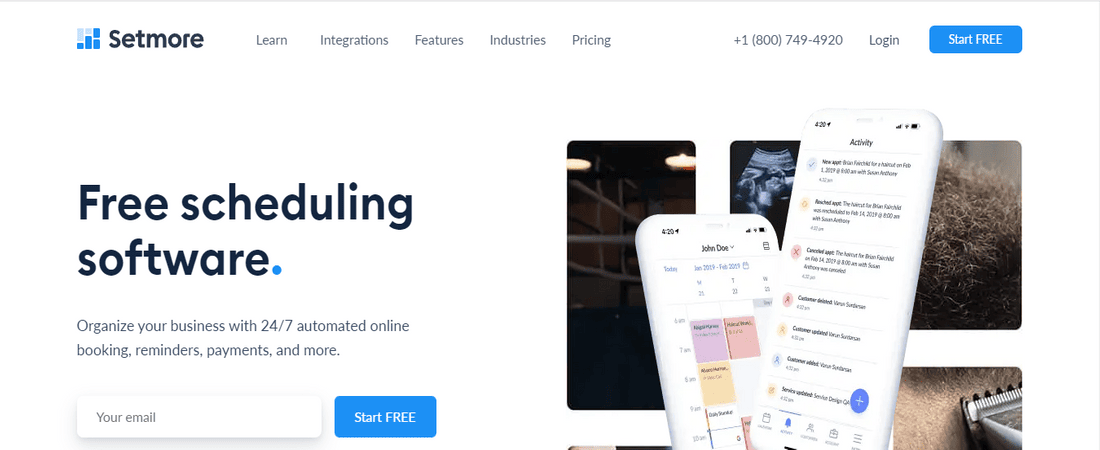
Setmore is by far the most efficient online appointment scheduling software. The program allows you to interact with your consumers by creating a customizable booking page. Customers may now schedule online appointments with you on the booking page, which displays your company’s pricing, availability, and other crucial information. Clients are kept informed by periodic reminders. Furthermore, as a product or service supplier, you are promptly notified of the most current appointments on your laptop or mobile device. Setmore’s colorful marketing methods and one-click connections enable you to rapidly develop your company.Setmore can help you grow your company significantly.
9. Doodle
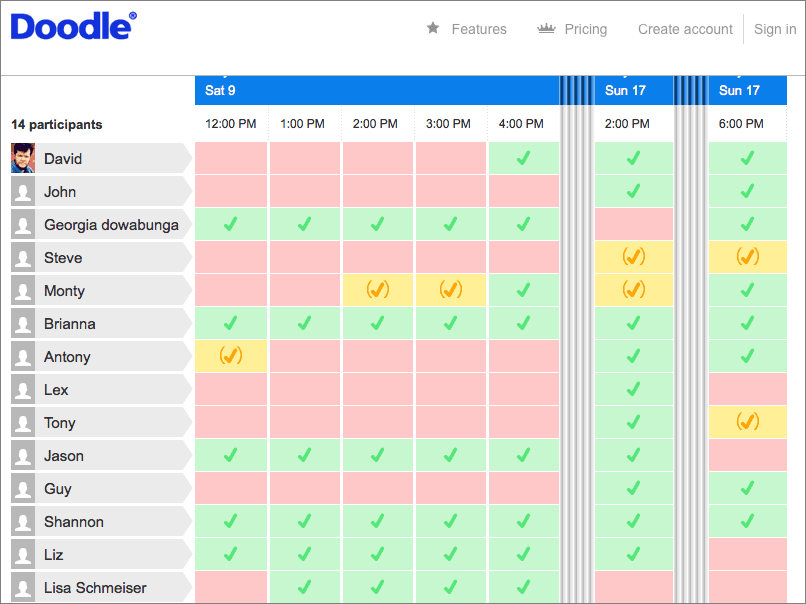
You can easily set up appointments with clients, suppliers, potential customers, and present customers with our online scheduling software. On this website, you may easily block your days and mark your availability, assisting you in organizing your calendar. The software may help almost all organizational departments. You may also organize meetings with your colleagues by setting up polls and selecting a suitable time to ensure solid and beneficial choices.
10. Agile CRM
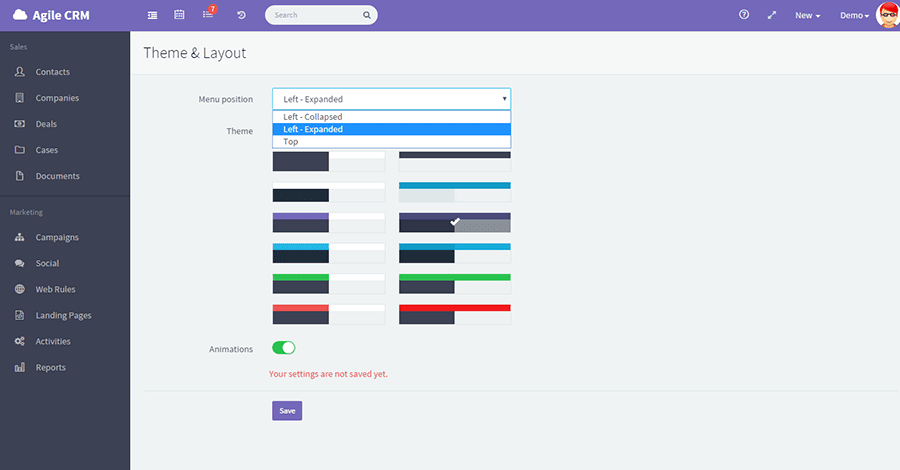
Agile email management software is the greatest tool for writing and delivering professional emails and newsletters to existing and prospective prospects. The program also allows you to monitor and analyze results as well as personalize mailings using simple procedures. The speed of the server, as the name indicates, makes the Agile software incredibly agile. You may personalize your emails with a choice of design options and extra features such as a drag-and-drop email builder. Agile CRM will make your work life more flexible and stress-free. Checking emails to remain current was a time-consuming task that is no longer required.
11. Easy!Appointments
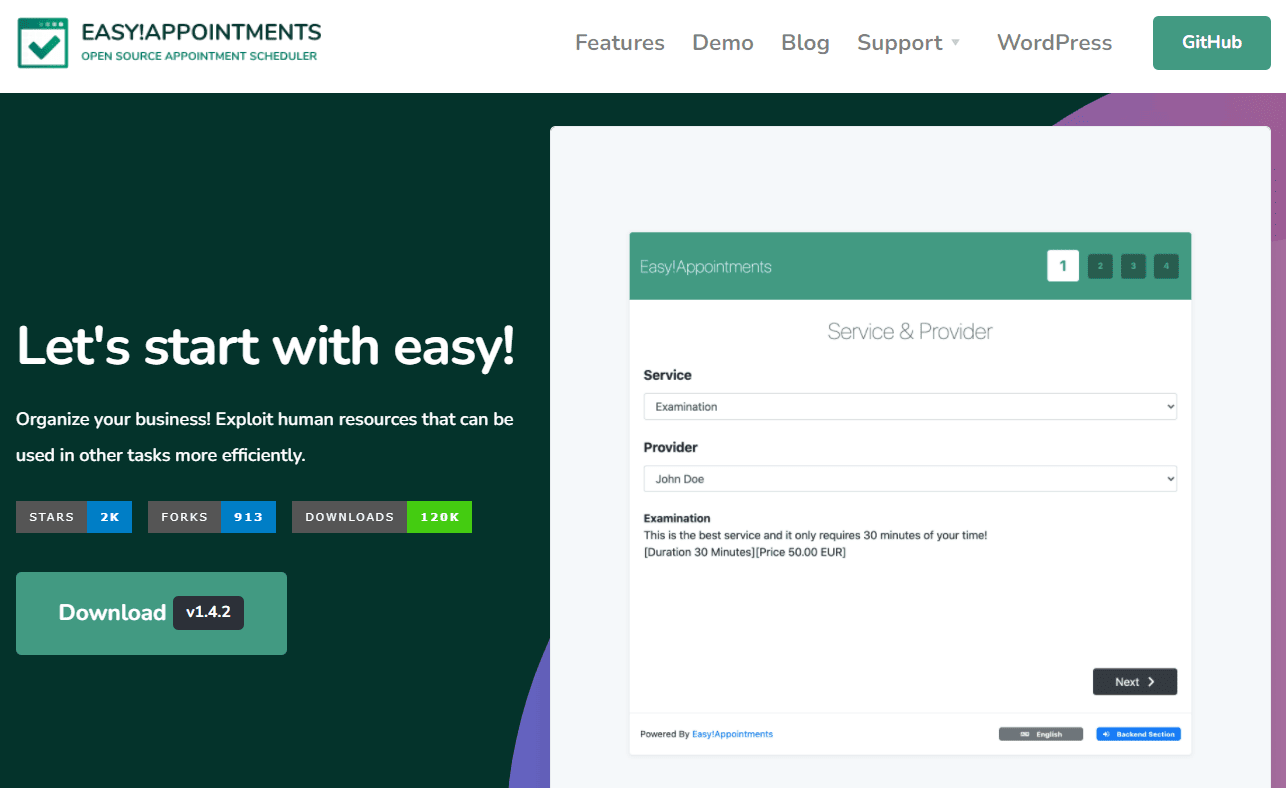
Easy!Appointments is a customized web application that validates your customers’ capacity to set online appointments and syncs your data with Google Calendar so that it may be used in the future. This application is easily available online since it is open-source. It is accessible for instant download, installation, and usage. That’s the end of it. Appointments allows your customers to choose the time and date of their appointment before scheduling it. Also Read Top 10 Game Hacking Apps For Android
12. Set a Time
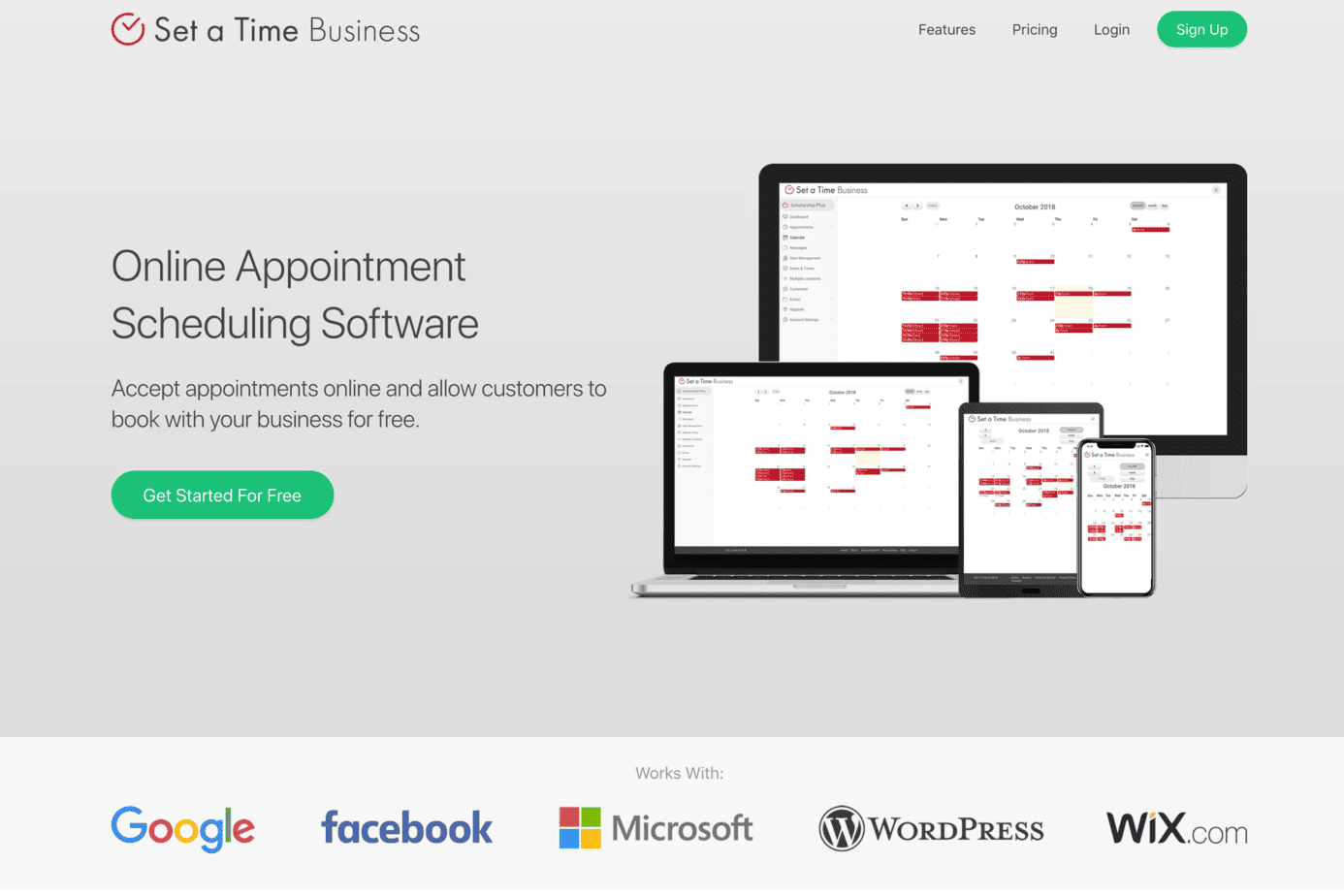
Clients may arrange appointments online and have them validated at any time using the Set a Time application. Customers may choose a certain day, time, services, and a variety of additional choices. Businesses may also adjust these parameters and further adapt their display choices based on their needs. Anyone, from anywhere in the earth, may use the program to arrange an appointment. By purchasing Set a Time, you can develop faster and save a ton of time. The program is appropriate for businesses of all sizes.
The post 12 Best Appointment Scheduling Software in 2024 appeared first on Techolac - Computer Technology News.
10 Best Debt Management Software in 2024 30 Sep 2024, 4:15 am
Managing debt effectively is crucial for financial advisors, small business owners, and individuals alike. With the right tools, you can streamline your operations, stay on top of payments, and ultimately achieve greater financial stability. In this listicle, we will explore the ten best debt management software solutions available in 2024, helping you make an informed choice that fits your needs.
What is Debt Collection Software?
Debt collection software is a tool designed to assist businesses and individuals in managing overdue invoices and outstanding debts. These systems offer a variety of functionalities, from tracking unpaid bills to automating the process of sending reminders and managing payment plans. By leveraging advanced analytics, debt collection software can also provide insights into customer payment behaviors and credit history, enabling users to make informed decisions when devising repayment strategies. In addition, many of these solutions integrate with existing financial platforms, offering seamless operation and improving overall workflow efficiency. Selecting the right debt collection software can significantly enhance the ability to recover debts and maintain healthy cash flow.
To ensure we provide you with the best options, we’ve considered the following factors for inclusion and ranking:
- Ease of Use: User-friendly interfaces and intuitive designs.
- Features: Comprehensive tools for debt tracking, payment scheduling, interest calculations, etc.
- Pricing: Affordability and value for money.
- Customer Support: Availability and quality of customer service.
- User Reviews: Feedback from real users to gauge satisfaction and performance.
Top 10 Debt Management Software for 2024
1. DebtPayPro
DebtPayPro stands out with its comprehensive suite of features tailored for financial advisors and debt relief companies. It offers client management, payment processing, and automation tools.
Key Features:
- Client management and CRM integration
- Automated payment scheduling
- Customizable reporting tools
Pricing:
- Starts at $50/month
User Reviews:
- “DebtPayPro has streamlined our debt management process, making it easier to track client progress and payments.” – John D., Financial Advisor
2. ZilchWorks
ZilchWorks is user-friendly software designed for individuals looking to manage their debt effectively. It offers straightforward tools for tracking debts and planning repayment strategies.
Key Features:
- Debt payoff planning tools
- Interest calculation and tracking
- Simple and intuitive interface
Pricing:
- One-time fee of $39
User Reviews:
- “ZilchWorks helped me create a clear plan to pay off my debts faster. Highly recommend it!” – Sarah M., Individual User
3. TurboDebt
TurboDebt focuses on providing a comprehensive debt management solution for small business owners. It offers integration with accounting software and robust reporting tools.
Key Features:
- Accounting software integration
- Detailed financial reporting
- Payment reminders and alerts
Pricing:
- Starts at $30/month
User Reviews:
- “TurboDebt has been a game-changer for our small business, keeping us organized and on top of our debt repayments.” – Mike S., Small Business Owner
4. Quicken Deluxe
Known for its personal finance management capabilities, Quicken Deluxe also excels in debt management. It provides a holistic view of your finances, including debt tracking and repayment planning.
Key Features:
- Comprehensive financial overview
- Debt tracking and payoff planner
- Budgeting tools
Pricing:
- Starts at $35.99/year
User Reviews:
- “Quicken Deluxe makes managing my finances and debts seamless. The payoff planner is particularly useful.” – Emily T., Individual User
5. Undebt.it
Undebt.it offers a free, cloud-based solution for managing debts. It provides various payoff strategies and tools for calculating interest and tracking progress.
Key Features:
- Multiple debt payoff strategies
- Interest calculation and tracking
- Cloud-based access
Pricing:
- Free (with optional premium features)
User Reviews:
- “Undebt.it is a fantastic free tool that offers everything I need to manage my debts efficiently.” – James L., Individual User
6. You Need a Budget (YNAB)
YNAB is renowned for its budgeting capabilities but also provides excellent tools for debt management. It encourages users to be proactive with their finances.
Key Features:
- Proactive debt management tools
- Budgeting and financial planning
- Real-time updates and tracking
Pricing:
- $14.99/month or $98.99/year
User Reviews:
- “YNAB has changed the way I approach my finances, helping me stay on top of my debts and budget effectively.” – Lisa K., Individual User
7. Tally
Tally is a mobile app that automates credit card debt payments, helping users save on interest and manage multiple cards with ease.
Key Features:
- Automated credit card payment management
- Interest rate optimization
- Credit card consolidation
Pricing:
- $4.99/month
User Reviews:
- “Tally has simplified my credit card debt management, saving me money on interest and reducing stress.” – David W., Individual User
8. Savvy Debt Payoff Planner
Savvy Debt Payoff Planner offers a simple yet effective approach to debt management, focusing on visual progress tracking and personalized payment plans.
Key Features:
- Visual debt payoff tracking
- Personalized payment plans
- Intuitive mobile app interface
Pricing:
- Free (with in-app purchases)
User Reviews:
- “The visual tracking feature of Savvy Debt Payoff Planner keeps me motivated to stay on track with my payments.” – Maria H., Individual User
9. Debt Manager
Debt Manager is a straightforward application that helps users organize their debts and create manageable payment schedules.
Key Features:
- Debt organization and tracking
- Payment scheduling and reminders
- Simple user interface
Pricing:
- $1.99 (one-time fee)
User Reviews:
- “Debt Manager is a simple yet powerful tool that has helped me stay organized and committed to my debt repayment plan.” – Karen P., Individual User
10. Credit Karma
While primarily known for credit score monitoring, Credit Karma also offers debt management tools to help users understand and manage their debts more effectively.
Key Features:
- Credit score monitoring and analysis
- Debt management tools
- Personalized financial recommendations
Pricing:
- Free
User Reviews:
- “Credit Karma’s debt management tools have given me a clearer understanding of my financial situation and how to improve it.” – Tom R., Individual User
How to Implement Debt Collection Software?
Implementing debt collection software in your business involves several key steps to ensure a smooth transition and maximize its benefits. Firstly, identify your specific business needs and goals related to debt collection. This will guide your selection of software and features that align with your organizational processes. Once you choose the right software, the next step is to involve your team in training sessions to familiarize them with the new system. This is crucial for a seamless adaptation and to minimize any disruption in ongoing operations.
Additionally, it’s important to integrate the software with your existing accounting and financial systems for a unified approach to managing finances. Ensure that data migration from any old systems is accurate and complete to maintain operational continuity. Monitor the initial implementation phase closely and gather feedback from users to identify any issues or areas for improvement. Finally, evaluate the effectiveness of the software by tracking its impact on your debt recovery rates and overall efficiency. Adjust settings and strategies as needed to optimize performance and realize the full potential of the debt collection software.
What is Debt Management?
Debt management refers to the strategic planning and execution of activities designed to reduce and eventually eliminate debt. This process involves assessing one’s financial situation, creating a realistic budget, and prioritizing debt payments to avoid excessive interest charges and penalties. Effective debt management can involve techniques such as consolidating debts, negotiating with creditors for better terms, and employing various payoff strategies like the snowball or avalanche method. The ultimate goal of debt management is to regain financial stability and improve creditworthiness, allowing individuals or businesses to redirect their finances towards savings, investments, and other financial goals. It requires discipline, consistency, and sometimes the assistance of financial advisors or debt management services.
Conclusion
Choosing the right debt management software is essential for effectively managing your finances, whether you’re a financial advisor, small business owner, or an individual. Each of the software solutions listed here offers unique features and benefits to cater to various needs. Explore these options and find the one that suits your requirements best. Start your journey to financial stability today by trying out one of these top-rated debt management tools.
The post 10 Best Debt Management Software in 2024 appeared first on Techolac - Computer Technology News.
15 Best Learning Management Systems (LMS) in 2024 30 Sep 2024, 4:08 am
The way we learn and train has transformed dramatically, thanks in large part to innovative Learning Management Systems (LMS). These platforms have become indispensable tools for educators, HR professionals, and corporate trainers, enabling efficient, flexible, and scalable learning experiences. In this article, we’ll explore the top 15 LMS platforms for 2024, providing you with valuable insights to help you choose the right one for your needs.
What is Learning Management System (LMS) software?
Learning Management System (LMS) software is a digital platform designed to facilitate the management, delivery, and tracking of educational courses or training programs. These systems offer a comprehensive suite of features, including course authoring, progress tracking, assessments, and reporting. LMS software is leveraged by educational institutions, corporations, and organizations to streamline the learning process, enhance accessibility, and personalize learning experiences. With cloud-based solutions, learners can access materials anytime and anywhere, making it easier to adapt to diverse learning needs. Additionally, modern LMS platforms often integrate with other systems, offering seamless connectivity with existing tools and enhancing the overall learning ecosystem.
When selecting the best LMS platforms, we considered several factors:
- User-Friendliness: Easy navigation and intuitive interfaces.
- Features: Variety and utility of tools offered, including course creation, assessment capabilities, and analytics.
- Scalability: Ability to accommodate growing numbers of users and content.
- Integration: Compatibility with other software and systems.
- Support and Community: Availability of customer support and active user communities.
- Pricing Model: Cost-effectiveness and transparency in pricing.
Top 15 LMS Platforms for 2024
1. Moodle
Overview
Moodle is a free, open-source LMS known for its flexibility and extensive community support. It’s ideal for educational institutions and organizations looking for customizable solutions.
- Pros: Highly customizable, large user community, extensive plugins.
- Cons: Requires technical expertise for setup and maintenance.
- Case Study: The University of Minnesota uses Moodle to deliver online courses to over 50,000 students annually, leveraging its flexibility to integrate with existing systems.
2. Canvas
Overview
Canvas is a cloud-based LMS popular in both educational and corporate settings. It offers a user-friendly interface and robust mobile app.
- Pros: Intuitive interface, excellent mobile support, strong analytics.
- Cons: Higher cost compared to other LMS options.
- Testimonial: “Canvas has transformed our online learning environment. The user experience is seamless, and the support team is fantastic!” – Sarah L., Corporate Trainer.
3. Blackboard
Overview
Blackboard is one of the most established LMS platforms, widely used in higher education and professional training. It offers a comprehensive suite of tools for educators and learners.
- Pros: Extensive features, strong analytics, reliable support.
- Cons: Steeper learning curve, higher price point.
- Case Study: Georgetown University utilizes Blackboard to enhance student engagement and streamline administrative tasks, resulting in improved academic outcomes.
4. TalentLMS
Overview
TalentLMS is designed for corporate training and small to medium-sized businesses. It features a clean, intuitive interface and extensive customization options.
- Pros: Easy to set up, cost-effective, strong integration capabilities.
- Cons: Limited advanced reporting options.
- Testimonial: “TalentLMS made it easy to train our global sales team efficiently. The customization options allowed us to tailor the experience to our specific needs.” – John D., HR Manager.
5. Docebo
Overview
Docebo is an AI-powered LMS that enhances learning through personalized experiences. It’s suitable for mid-sized to large enterprises.
- Pros: AI-driven personalization, robust analytics, strong scalability.
- Cons: Higher pricing, complex setup.
- Case Study: IBM uses Docebo to deliver personalized training to over 300,000 employees worldwide, resulting in increased engagement and knowledge retention.
6. Schoology
Overview
Schoology combines LMS and social networking, making it popular in K-12 and higher education. It supports blended learning and collaborative activities.
- Pros: Social learning features, easy-to-use interface, strong community.
- Cons: Limited customization options.
- Testimonial: “Schoology has fostered a collaborative learning environment, allowing our students to engage more deeply with the material and each other.” – Rachel M., Educator.
7. SAP Litmos
Overview
SAP Litmos is a cloud-based LMS ideal for corporate training, featuring a wide range of integrations and a user-friendly interface.
- Pros: Strong integration options, mobile-friendly, extensive course library.
- Cons: Limited customization, higher cost.
- Case Study: Coca-Cola uses SAP Litmos to train its global workforce, ensuring consistency and compliance across different regions.
8. Absorb LMS
Overview
Absorb LMS is known for its sleek design and powerful features, catering to both corporate and educational sectors.
- Pros: User-friendly, strong reporting tools, scalable.
- Cons: Higher cost, limited social learning features.
- Testimonial: “Absorb LMS made it easy to manage and deliver our training programs. The analytics have been invaluable for tracking progress.” – Emma S., Training Coordinator.
9. Edmodo
Overview
Edmodo is a social learning platform that connects teachers, students, and parents. It’s widely used in K-12 education.
- Pros: Social features, easy communication, free basic version.
- Cons: Limited advanced features, primarily for K-12.
- Case Study: A school district in California uses Edmodo to enhance parent-teacher communication and support student learning outside the classroom.
10. LearnUpon
Overview
LearnUpon is designed for corporate training, offering a simple and effective platform for delivering online courses.
- Pros: Easy to use, strong support, good integration options.
- Cons: Limited advanced features, higher cost for full functionality.
- Testimonial: “LearnUpon streamlined our onboarding process, making it easier to train new employees quickly and effectively.” – Mike T., HR Director.
11. Teachable
Overview
Teachable is a popular LMS for entrepreneurs and small businesses looking to create and sell online courses.
- Pros: Easy course creation, integrated payment processing, marketing tools.
- Cons: Transaction fees on lower-tier plans, limited customization.
- Case Study: An online entrepreneur uses Teachable to generate significant revenue by selling courses on digital marketing.
12. Adobe Captivate Prime
Overview
Adobe Captivate Prime is designed for enterprise training, offering a wide range of features and integrations.
- Pros: Comprehensive features, strong analytics, mobile-friendly.
- Cons: Higher cost, steep learning curve.
- Testimonial: “Adobe Captivate Prime has been instrumental in scaling our training programs. The detailed analytics help us measure impact and improve continuously.” – Laura P., Learning and Development Manager.
13. iSpring Learn
Overview
iSpring Learn is a user-friendly LMS that’s ideal for small to medium-sized businesses. It offers strong integration with PowerPoint for course creation.
- Pros: Easy to use, cost-effective, PowerPoint integration.
- Cons: Limited advanced features, basic reporting.
- Case Study: A mid-sized company uses iSpring Learn to deliver engaging training sessions, reducing the time required for employee onboarding.
14. Tovuti
Overview
Tovuti is a modern LMS that combines a user-friendly interface with powerful features, suitable for various industries.
- Pros: Easy to use, customizable, strong support.
- Cons: Higher cost, some advanced features require additional modules.
- Testimonial: “Tovuti enabled us to create interactive and engaging training content that our employees love.” – Sophia R., Training Manager.
15. Cornerstone OnDemand
Overview
Cornerstone OnDemand is a comprehensive LMS designed for large enterprises, offering extensive features and robust support.
- Pros: Comprehensive features, strong analytics, scalable.
- Cons: High cost, complex setup.
- Case Study: A multinational corporation uses Cornerstone OnDemand to manage training and development for its global workforce, resulting in improved performance and employee satisfaction.
Additional LMS to Consider
While the above platforms are our top picks for 2024, several up-and-coming LMS platforms show promise:
- LearnWorlds: Known for its interactive video features and strong marketing tools.
- Thinkific: Offers a user-friendly course creation experience and robust community features.
- Kajabi: Ideal for entrepreneurs looking to create and sell online courses with integrated marketing tools.
Benefits of LMS platforms
Cost Efficiency
LMS platforms offer a cost-effective solution for organizations by reducing the need for physical training materials and venues. With digital courses, companies can save on traditional setup expenses, making learning accessible to a wider audience without the burden of high costs.
Flexibility and Convenience
Learners can access LMS platforms anytime and anywhere, providing flexibility that traditional training methods often lack. This accessibility allows individuals to engage with learning materials at their own pace, accommodating different learning styles and schedules.
Tracking and Reporting
One of the most significant benefits of an LMS is its ability to track and report on learner progress. Detailed analytics provide insights into course effectiveness and individual performance, enabling organizations to tailor their training programs to better meet learner needs and organizational goals.
Scalability
Whether you are a small business or a large enterprise, LMS platforms can grow alongside your organization. They offer scalable solutions that can handle an expanding number of learners and courses, facilitating continuous learning and development as your company evolves.
Personalization
With features like adaptive learning paths and personalized content recommendations, LMS platforms cater to individual learner needs. This personalization enhances engagement and improves knowledge retention, ensuring that training is both effective and relevant to each participant.
Collaboration and Social Learning
Many LMS platforms incorporate social learning features, fostering collaboration and knowledge sharing among learners. Forums, chats, and social media integrations facilitate a community environment, encouraging learners to connect, discuss, and support each other throughout their learning journeys.
Types of Learning Management Systems
Proprietary LMS
Proprietary LMS platforms are developed and maintained by specific companies. They often come with dedicated support and comprehensive features, catering to a wide range of organizational needs. However, these systems can be costly and may require specific licensing agreements. Many proprietary LMS platforms offer robust security measures and regular updates to ensure compliance with industry standards.
Open-Source LMS
Open-source LMS platforms are freely available and can be customized to meet specific requirements. These systems provide a high degree of flexibility and control, allowing organizations to tailor the platform to their unique needs. However, they often require in-house technical expertise to manage installation, development, and maintenance. Popular open-source options include Moodle and Open edX, which are embraced by educational institutions worldwide for their adaptability and collaborative community contributions.
Cloud-Based LMS
Cloud-based LMS platforms are hosted on the provider’s servers and accessed via the internet, offering convenience and ease of use. Organizations benefit from automatic updates, scalability, and reduced IT infrastructure costs. These platforms are ideal for businesses seeking a turnkey solution that can be quickly implemented without the burden of extensive hardware management. Notable examples include TalentLMS and Docebo, which provide seamless integrations with other software and tools.
Installed LMS
Installed LMS platforms are deployed on an organization’s own servers, granting full control over the system. While this offers enhanced security and customization potential, it also requires substantial IT resources for maintenance and upgrades. Installed LMS options are ideal for organizations with specific privacy concerns or regulatory requirements, needing robust systems that can be meticulously controlled.
Industry-Specific LMS
Some LMS platforms are designed specifically for particular industries, offering specialized features and content. These systems address the unique training needs and compliance requirements of industries such as healthcare, finance, or manufacturing. By offering tailored solutions, industry-specific LMS platforms ensure that organizations can deliver relevant training that aligns with their professional standards and practices.
Learning Management Systems Use Cases
Corporate Training
Corporate training is one of the most prevalent use cases for Learning Management Systems (LMS). Companies utilize LMS platforms to provide consistent and efficient training to their workforce, covering a range of topics from compliance and safety to leadership and skills development. By leveraging LMS for corporate training, organizations can streamline onboarding processes, ensure all employees have access to crucial information, and maintain high standards of competency and performance across the board. The scalability of LMS platforms allows businesses to train a growing number of employees without compromising on quality or consistency.
Educational Institutions
Educational institutions increasingly rely on LMS to support both traditional and online learning environments. These systems offer tools for course creation, grade management, and communication between educators and students. With features such as virtual classrooms, discussion boards, and assessment options, LMS platforms enhance the learning experience by facilitating interactive and engaging educational activities. Schools and universities benefit from the flexibility and accessibility LMS offers, enabling them to cater to diverse student needs and learning preferences.
Onboarding New Talent
LMS platforms are integral in the onboarding process, providing new employees with the necessary resources to understand their roles and the company culture. Through a structured and consistent onboarding program, new hires can quickly acclimate to their new work environment. This ensures early competency and reduces the time it takes for employees to make significant contributions to the organization. LMS platforms can offer personalized onboarding paths, helping new team members feel more integrated and valued from the outset.
Certification Programs
Many industries require professionals to obtain and maintain certifications. LMS platforms are well-suited for managing certification programs, providing structured courses that lead to qualifications in various fields. These platforms provide easy access to study materials, assessments, and progress tracking. Organizations can efficiently issue and manage certificates, ensuring regulatory compliance and professional development standards are met. This capability is valuable for industries such as healthcare, IT, and finance, where ongoing education and credentialing are critical.
Customer and Partner Training
Beyond internal training, LMS platforms are effective for educating customers and business partners. Providing access to training materials and tutorials helps improve customer satisfaction by ensuring they understand how to use products and services effectively. For partners, training can enhance knowledge of company offerings and foster better collaboration. LMS platforms allow organizations to deliver targeted content to external stakeholders, building stronger relationships and increasing loyalty.
Each of these use cases demonstrates the versatility and far-reaching applicability of LMS platforms across different sectors, ensuring that learning and development are integral parts of an organization’s growth and success.
Conclusion
Choosing the right LMS platform can significantly impact your educational or training outcomes. Whether you’re an educator, HR professional, or corporate trainer, the options listed above provide a comprehensive overview of the best LMS platforms available in 2024. Evaluate your specific needs, consider the pros and cons, and take advantage of trial periods to find the perfect fit.
Ready to enhance your learning and training experiences? Explore these top LMS platforms today and revolutionize how you deliver knowledge and skills.
The post 15 Best Learning Management Systems (LMS) in 2024 appeared first on Techolac - Computer Technology News.
10 Best Partition Managers for Mac in 2024 30 Sep 2024, 3:54 am
Managing disk partitions on your Mac can be a daunting task, especially if you are not tech-savvy. But, partition managers make this process straightforward and efficient, allowing you to create, resize, and manage partitions with ease. Whether you’re an IT professional, a tech enthusiast, or simply a Mac user looking to optimize your storage, this listicle will guide you through the best partition managers available for Mac in 2024.
Why Partition Managers Matter for Mac Users
Partition managers play a crucial role in organizing your Mac’s storage. They help you allocate space, create separate environments for different tasks, and back up your data more effectively. If you often find yourself juggling between work and personal files, or if you need to run multiple operating systems, a reliable partition manager is your best bet. In 2024, with storage demands increasing, having a good partition manager will ensure your Mac runs smoothly and efficiently.
Choosing the right partition manager involves considering several factors:
- Ease of Use: The software should have an intuitive interface that’s easy to navigate.
- Performance: It should perform tasks quickly without compromising data integrity.
- Features: Look for features like resizing, merging, and splitting partitions, as well as support for multiple file systems.
- Customer Support: Reliable customer support can be a lifesaver when you run into issues.
- Compatibility: Ensure the partition manager is compatible with the latest macOS versions.
Top 10 Partition Managers for Mac in 2024
1. Paragon Hard Disk Manager
Paragon Hard Disk Manager is known for its robust features and user-friendly interface. It offers partition resizing, backup, and recovery options, making it an all-in-one solution for Mac users.
Key Features:
- Comprehensive disk management including resizing, merging, and splitting partitions.
- Advanced backup and recovery options.
- User-friendly interface with drag-and-drop functionality.
Performance:
Paragon Hard Disk Manager is known for its speed and reliability. It performs tasks quickly without risking data integrity.
User Interface:
The interface is intuitive, making it accessible even to those who are not tech-savvy. The drag-and-drop feature simplifies complex tasks.
2. Disk Utility
Disk Utility is a built-in macOS tool that provides basic partition management functionalities. While it might not have as many advanced features as third-party software, its accessibility and ease of use make it a popular choice among many Mac users.
Key Features:
- Pre-installed on all Macs, offering an immediate option without additional downloads.
- Allows users to create, delete, and resize partitions with minimal effort.
- Offers disk verification and repair tools to ensure the health of your storage.
Performance:
Disk Utility is optimized for macOS, ensuring smooth operation and integration with the system. While not as fast as some dedicated third-party options, it efficiently manages partitions for everyday needs.
User Interface:
The interface is straightforward, with clear navigation that aligns with the overall macOS design. It’s designed to help users quickly find and execute the tasks they need.
3. Stellar Partition Manager
Stellar Partition Manager is a versatile tool known for its simplicity and effectiveness in managing Mac partitions. It’s particularly advantageous for users who need to frequently rearrange their storage layout.
Key Features:
- Allows creating, deleting, and resizing partitions without data loss.
- Supports a wide range of file systems, enhancing its adaptability.
- Provides a preview option to see changes before applying them.
Performance:
The software is built to handle partition tasks swiftly without complications, ensuring both speed and data safety.
User Interface:
Stellar Partition Manager sports a clean interface with easily accessible functions. Its step-by-step guidance helps users execute even complex tasks with confidence.
4. EaseUS Partition Master
EaseUS Partition Master is a comprehensive partition management tool that offers a robust set of features geared toward both beginners and advanced users. Its versatility and reliable performance make it a popular choice among Mac users.
Key Features:
- Supports resizing, merging, and splitting of partitions with ease.
- Compatible with multiple file systems, ensuring broad usability.
- Provides a partition recovery function to retrieve lost or damaged partitions.
Performance:
EaseUS Partition Master is renowned for its efficient performance and speed. It ensures quick execution of partition-related tasks while maintaining data integrity and safety.
User Interface:
The interface is user-friendly, with intuitive layout and icons that guide users through the partitioning process. The software is designed to minimize confusion and enhance the user experience.
5. iPartition
iPartition is known for its advanced features and precision in managing partitions on Mac. This tool is particularly useful for users looking to perform complex partition tasks with accuracy.
Key Features:
- Offers advanced partitioning features such as dynamic resizing and reordering.
- Supports a wide array of file systems, including HFS+, FAT, and NTFS.
- Includes a comprehensive help guide to assist users in managing partitions efficiently.
Performance:
iPartition provides reliable performance with tools that allow for careful adjustments without data loss, making it ideal for intricate storage management.
User Interface:
The user interface is designed to be clear and concise, helping users focus on essential functions. It provides detailed guides and intuitive controls to execute complex tasks successfully.
6. AOMEI Partition Assistant
AOMEI Partition Assistant is a powerful and versatile partition management tool that has gained popularity among Mac users for its comprehensive feature set and ease of use. It caters to both novice users and tech-savvy individuals who demand more control over their disk management tasks.
Key Features:
- Offers partition resizing, merging, and splitting with intuitive wizards to guide users.
- Supports cloning of partitions and entire disks, a useful feature for upgrades and backups.
- Includes a partition recovery wizard to restore lost or accidentally deleted partitions.
- Compatible with various file systems, which ensures seamless integration with different storage setups.
Performance:
AOMEI Partition Assistant is known for its efficient and reliable performance. It successfully handles partition operations even on large disks, maintaining data integrity throughout the process.
User Interface:
The interface is straightforward, with a clean and organized layout that simplifies navigation. The step-by-step instructions and helpful tips make it easy for users to perform basic to complex partition management tasks without unnecessary complications.
7. MiniTool Partition Wizard
MiniTool Partition Wizard is renowned for its comprehensive capabilities in partition management and its user-friendly approach. It appeals to both novices and experienced users who seek versatile and reliable disk handling tools on their Mac systems.
Key Features:
- Supports basic and advanced partition operations such as resizing, moving, formatting, and merging partitions.
- Includes a disk cloning feature, enabling users to migrate data effortlessly during upgrades or backups.
- Offers a partition recovery option to restore lost partitions due to accidental deletions or system errors.
- Compatible with a variety of file systems, ensuring flexibility in managing different storage types.
Performance:
MiniTool Partition Wizard is optimized for high-speed operations while ensuring data safety. It executes tasks efficiently even on extensive storage devices, making it a dependable choice for robust partition management.
User Interface:
The interface is intuitive with a clean layout, making navigation and task execution straightforward. The software provides comprehensive guides and tooltips, assisting users in completing both simple and complex tasks with ease.
Overall, MiniTool Partition Wizard delivers a powerful yet approachable solution for effective disk management on Mac, catering to a broad spectrum of partitioning needs.
8. Disk Drill
Disk Drill stands out as a versatile tool that not only manages disk partitions but also offers powerful data recovery features. Designed with both beginners and experienced users in mind, Disk Drill provides a comprehensive solution for handling complex disk management tasks on Mac.
Key Features:
- Provides a dual functionality of partition management and data recovery.
- Supports advanced partition operations like resizing, creating, and deleting partitions with minimal effort.
- Offers powerful data recovery options, capable of retrieving lost files from corrupt or damaged partitions.
- Compatible with a wide range of file systems, including HFS+, APFS, and NTFS.
Performance:
Disk Drill is engineered to maintain fast and efficient operations, ensuring tasks such as partitioning and data recovery are completed without compromising the system’s performance. It emphasizes data safety and integrity, providing users with peace of mind during complex operations.
User Interface:
The software features a sleek and modern interface that simplifies tasks through intuitive navigation and clear instructions. The interface is designed to make both partition management and data recovery accessible, offering a seamless experience for all users. Comprehensive guides and tutorials are integrated to further ensure successful task execution, making Disk Drill a multifaceted tool for Mac users.
9. Drive Genius
Drive Genius is another robust tool for managing and optimizing disk performance on Mac systems. Known for its extensive suite of features, Drive Genius caters to users who seek advanced options for both basic and professional-grade disk management.
Key Features:
- Offers a wide range of utilities including disk optimization, defragmentation, and secure data wipe.
- Provides detailed drive monitoring to predict potential failures before they occur, ensuring the integrity and longevity of storage devices.
- Includes malware scanning and system analysis tools to maintain optimal performance and security.
- Features a bootable recovery drive option, allowing users to troubleshoot and repair disks even when the system won’t boot.
Performance:
Drive Genius excels in maintaining efficient operations without impacting system speed. Its proactive monitoring and optimization tools work seamlessly in the background, ensuring that the Mac’s storage system is running smoothly.
User Interface:
The interface of Drive Genius is thoughtfully designed to accommodate users of all skill levels. It presents a dashboard that clearly displays system status and offers straightforward paths to perform various tasks. With comprehensive instructions and an organized layout, users can quickly access and execute desired functions, making the management of disk partitions and overall system health a hassle-free experience. Drive Genius proves to be a vital tool for anyone focused on robust and reliable disk maintenance on Macs.
10. GParted
GParted is a powerful, open-source partition editor for graphically managing disk partitions. It is widely used by both Linux and Mac users seeking a free yet comprehensive tool for disk management and partition manipulation.
Key Features:
- Implements a wide array of partition operations including resizing, copying, and moving partitions without data loss.
- Supports numerous file systems such as ext2/ext3/ext4, FAT16/FAT32, NTFS, and more, making it highly versatile.
- Capable of creating, deleting, and labeling partitions, as well as enabling and disabling partition flags like boot and hidden.
- Offers support for both GPT and MBR partition schemes, providing flexibility in different partitioning needs.
Performance:
GParted is known for its efficient handling of large storage devices and complex partition tasks. Its performance is geared toward completing operations swiftly while safeguarding data integrity, ensuring a reliable user experience even during intricate tasks.
User Interface:
While GParted’s interface might seem basic at first glance compared to some commercial tools, it is straightforward and functional. Users are presented with a clear overview of all partitions, allowing for easy navigation and task execution. Step-by-step operations and status updates help users confidently perform a range of tasks, making GParted a valuable tool, especially for technical users familiar with partition workflows.
What Is Hard Drive Partitioning Software?
Hard drive partitioning software is a critical tool for managing how data is organized on a computer’s disk. These software solutions enable users to create, resize, and manage partitions with ease, catering to both novice users and IT professionals. Partitioning software often includes features such as the ability to merge partitions, convert file systems, and perform operations without data loss, providing a versatile toolkit for disk management.
Moreover, they typically support a wide range of file systems and partition schemes, allowing users to adapt to specific system requirements and workflows. By employing partitioning software, users can enhance their system’s performance, security, and organization, ultimately leading to a more efficient and reliable computing experience. The user-friendly interfaces of these tools empower users by simplifying complex disk management tasks, ensuring that anyone can effectively optimize their storage configuration.
What Are The Benefits Of Hard Drive Partitioning?
Hard drive partitioning offers numerous benefits that enhance the overall functionality and efficiency of a computer system. One significant advantage is improved organization; by dividing a disk into separate partitions, users can categorize and store different types of data more effectively, leading to a more structured file system. This separation simplifies data management and retrieval, as each partition can be dedicated to specific uses such as system files, personal documents, or backups.
Additionally, partitioning enhances system performance. By isolating the operating system on a separate partition, for instance, it minimizes fragmentation and improves access speeds, which can result in smoother operation and less strain on system resources. Furthermore, partitions can act as safeguards against data loss—if one partition becomes corrupted, the others remain intact, preserving valuable data and reducing the risk of total data loss.
Partitioning also facilitates the installation of multiple operating systems on a single machine, enabling users to easily switch between operating systems for various tasks without the need for additional hardware. This flexibility is particularly beneficial for developers or users who require different environments for testing or specific applications. Overall, hard drive partitioning is a practical approach that offers both organizational and performance-related benefits, making it an essential technique for efficient disk management.
Conclusion
Choosing the right partition manager can make a significant difference in how efficiently you manage your Mac’s storage. While each of the tools listed has its strengths, Paragon Hard Disk Manager stands out for its comprehensive features and user-friendly interface, making it the best choice for most users. For those looking for basic, reliable performance without additional cost, Disk Utility is a solid option.
Ready to take control of your Mac’s storage? Explore these partition managers and find the one that suits your needs best. Don’t wait—optimize your Mac’s performance today!
The post 10 Best Partition Managers for Mac in 2024 appeared first on Techolac - Computer Technology News.
17 Sites Like Twidouga In 2024 24 Sep 2024, 9:04 pm
17 Sites Like Twidouga. Users may easily save movies from Twitter using the useful service provided by Twidouga, an online store. This platform enables users to quickly save Twitter videos for their own entertainment and offers a simple, free service without the need for a special software. It may even give its users access to interoperability with a variety of gadgets, including Android, iPhones, and PCs.
Users can easily utilize Twidouga by copying and pasting the URL of the desired Twitter video into the website’s URL field before selecting the Extract button. A helpful alternative for downloading and watching Twitter videos offline is the ability to right-click or hold the URL while clicking.
Features
- Prioritizes user privacy and provides powerful search tools
- Supports the categorization of content
- Enables the sharing of video content and offers an easy uploading process
Pros
- Puts user privacy first.
- Content classification
- Makes video sharing easier
- Powerful search tools
- Simple uploading procedure
Cons
- Just a few video formats
- Possible copyright problems
- Internet access is required.
17 Sites Like Twidouga In 2024
In this article, you can know about Sites Like Twidouga here are the details below;
1. Pscp.tv
Periscope, also known as Pscp.tv, is a huge platform where users may download a live streaming program from Twitter that enables them to broadcast and watch real-time footage from all around the world. This platform gives its users access to special features like a map view for content that is relevant to a given place, Twitter connection for quick broadcast announcements, and chat features for streamer-viewer interaction. Even more so than Twitch, it enables its users to view movies that can be shared and saved, and its search.
2. YBmate
You can convert videos for free on the website YBmate so that you can upload them on any website. You can display videos in any format on any website using this app’s ability to transform them. People must paste the tiny code into the website after the videos have been converted into any format and save the freshly created file. With this website, users can convert videos not only into different formats, but also into DVDs.
3. GetMyTweet
With the help of the free website and app GetMyTweet, you can download several videos from Twitter. Users of this website can change the format of downloaded videos. This website supports downloading videos in MP3, MP4, and x-OpenURL formats. You can also extract sound from the videos you download from this site with the aid of this website. On this website, you can download videos in three easy steps, just as on other comparable websites.
4. TWSaver
Twitter movies and GIFs can be downloaded for free using the website and online program TWSaver. Users can convert all downloaded videos from this website into MP4 files. Users can download videos from the website in several quality levels, including low quality (SD), high definition (HD), and ultrahigh definition (UHD). People must view videos on Twitter in order to download them. You must copy the video’s link and paste it before the user can see it. This is another Sites Like Twidouga.
5. Jihosoft 4K Video Downloader
The Jihosoft team created the free YouTube video downloader program known as Jihosoft 4K Video Downloader. You can download YouTube videos, subtitles and playlists, covers, music, and channels with the help of this app. Users of this software can download videos in UHD, 4K, and 8K quality. In complement to downloading videos from YouTube, you may also download videos from other social networking networks. You can download videos with this software from social media networks such Facebook, Dailymotion, Instagram, Twitter, and Vimeo. This is another Sites Like Twidouga.
6. SaveTweetVid
SaveTweetVid is a zcomplimentary Twitter video downloader website and program developed for downloading videos and GIFs from Twitter. In addition to downloading movies and GIFs, the users can also transform the videos into mp3 & mp4 formats. People do not require any registration to download movies & GIFs from this app. For downloading a video, you only have to duplicate the link of the video you want to download. After copying the URL, you have to put the link into.
7. Twitter Video Downloader
A free website and tool called Twitter Video Downloader is made specifically for downloading videos and GIFs from Twitter. This website allows users to convert their GIFs and Twitter videos into MP4 files. This website permits you to download Twitter videos in HD, SD, and UHD resolutions. You must copy the link to a specific video and paste it into the box in order to download the video. Following the link’s pasting into the box. This is another Sites Like Twidouga.
8. TWDOWN.net
To download videos from Twitter, use the free online tool TWDOWN.net or the TWDOWN.net app. Using this app, users can download photos and GIFs in addition to videos from Twitter. All of the videos you download from Twitter using this website are saved in high definition on your device. This website permits you to download videos in just two easy steps. Users must open the videos and copy the link first. They have copied the link.
9. SSSTwitter
SSSDavid B. Simon created the free Twitter video downloader website and tool. This website is specifically made for Twitter video downloads. Every video that is obtained from Twitter using this website is immediately saved on hardware. You must open the video and copy the URL before you can download it. You must paste the video’s URL into the box after copying it, then click the download button.
10. +Download 4 Instagram Twitter
Install 4 Instagram RosTeam created the free social and download software Twitter. You can download the photographs & videos you want from different social media sites using this software. This program allows you to download material from social media sites like Twitter, Instagram, Vine, and Tumblr. All the films and pictures the user downloads with this software are preserved in his gallery so he can view them when he’s not connected to the internet. You can download and share content from other apps using this one. This is another Sites Like Twidouga.
11. Twitter Media Downloader
A free tool and app for downloading Twitter videos is Twitter Media Downloader. With the aid of this software, consumers can preserve their Twitter media-timeline content. This software helps users to preserve their images and illustrators available on Twitter. In addition to sharing images and artwork, consumers may now store videos on Twitter using this app. Furthermore, this software enables users with a search bar to explore their favorite person’s timeline & download it. All the photos and videos downloaded.
12. MyMedia
MyMedia is a free productivity & file manager program developed by LK SKY Apps. Using this software, you can download files, music, and videos for playback offline. In addition to downloading files, consumers may also manage and organize files on this program. The software supports background mode, Incognito mode, and parallel downloading. It acts as an excellent mp3 player for playing, replaying, and shuffling tunes. In this program, you may create music folders and play them successively. Additionally, this app. This is another Sites Like Twidouga.
13. TeeVee
INTRACOM SA TELECOM SOLUTIONS created the free entertainment and TV-programming app TeeVee. You can watch all of the recorded TV shows using this app on other devices. With the help of this app, users may watch their preferred TV programs on a set timetable. You may bring your favorite show with you wherever you go with the aid of this app. Users must register their device on the app in order to watch TV on other devices.
14. SideReel
You can watch millions of TV series for free online at SideReel, a website that streams TV shows. This website offers TV shows in a variety of genres, such as adventure, action, and science fiction. You can download complete episodes of shows as well as drafts of brand-new episodes from this website. This website offers all the most recent TV show updates and news in addition to complete episodes of shows and specials.
15. KeepDownloading
A free internet service, video and movie program called KeepDownloading is used to download high-definition videos. You can download tapes from many social media sites, such as Dailymotion, Facebook, Twitter, Instagram, and YouTube, by using this website. Users must copy the video’s link from the platform and put it in the link bar in order to download videos. They must paste the link, then type it in and select the download option. People don’t just download videos and movies. This is another Sites Like Twidouga.
16. Download-Twitter-Videos
A free online tool and Twitter video downloading website is called Download-Twitter-Videos. You can download GIFs, images, and videos from Twitter with this website. You must open the video on Twitter and copy the link in order to download Twitter videos from this website. You must paste the video’s link into the site’s supplied box after copying it. The next step is to click the download option and choose a location for your saved file. Various file types are supported.
17. Twee
The Arthur software company created the free video and GIF-saving app called Twee. This program is primarily made for saving various GIFs and videos from Twitter. You must click the share button on any Twitter video or GIF in order to download it using this app. You must select Twee to share after clicking the sharing link; else, the item will be downloaded automatically. Copying and pasting the content’s link is another way to preserve it from Twitter. This is another Sites Like Twidouga.
The post 17 Sites Like Twidouga In 2024 appeared first on Techolac - Computer Technology News.
7 Best Online Stock Trading Platforms of 2024 24 Sep 2024, 7:01 pm
This post will explain online stock trading. An online trading platform is necessary if you want to increase your fortune through the stock market. You can create an investment portfolio that satisfies your financial objectives by using accounts with these companies to gain access to investments including stocks, bonds, ETFs, and mutual funds.
You can also invest in cryptocurrencies like Bitcoin, Dogecoin, and Etherum on a few new trading sites. But it can be inquiring to choose the best trading platform with so many options available. For this reason, we did some of the research and identified the best online trading platforms available.
Our analysis identifies the brokerages that best satisfy the requirements of various clients, from active traders looking for a superb mobile experience to long-term saves for retirement. Additionally, we’ll demonstrate which platforms have excellent qualities like cheap investment requirements and costs, smart trading capabilities, and first-rate customer support. Learn more by reading on.
Create a portfolio using a distinctive investing process.
You can invest any amount of money on Public.com in stocks, ETFs, and cryptocurrencies. Access a plethora of instructional content while exchanging ideas with others in a community.
Hawaii, Alaska, Florida, South Carolina, Georgia, Alabama, North Carolina, Tennessee, Rhode Island, Connecticut, Massachusetts, Maine, New Hampshire, Vermont, New York, New Jersey, DE, Delaware, Maryland, West Virginia, Ohio, Michigan, Arizona, Nevada, Utah, Colorado, New Mexico, South Dakota, Iowa, Illinois, Indiana, Iowa, Illinois, Minnesota, Wisconsin, Missouri, Louisiana, Mississippi, Arkansas, Texas, D.C., Washington, D.Idaho, California, North Dakota, Washington, Oregon,
7 Best Online Stock Trading Platforms of 2024
In this article, you can know about online stock trading here are the details below;
Offer applicable for Americans aged 18 and over; account approval required. Other charges connected with trading could exist. See disclosures at Public.com.
Reviews of the Top Online Trading Platforms
1. Best overall platform: Fidelity

PROS
- The majority of securities and brokerage services have little or no costs.
- Numerous choices for money management
- Robo-advisory options for straightforward investment tactics
- There are more than 200 investment hubs nationwide.
CONS
- Exorbitant costs for broker-assisted trades and managed options
- Doesn’t support direct bitcoin trading or futures
- The verification process for accounts could take a few days.
By providing four different mutual funds with expense ratios (investment fund management costs) of zero, Fidelity stands out as our top overall platform. No account fees or minimum deposits are required to open a retail brokerage account or an IRA with Fidelity. Also check warehouse management systems alternatives
Additionally, Fidelity provides a variety of investment options. You can either collect the portfolio yourself or utilise Fidelity Go, the company’s robo-advisor, if you just have one investment objective in mind. You can pick from three different wealth management plans with the help of private wealth management experts for larger portfolios and a more varied investing approach.
2. Best option for passive investors: Betterment

PROS
- Automated investment using state-of-the-art tools and knowledgeable financial advisors
- 0.25% annually on the amount you have invested.
- For balances over $100,000, 0.40% per year for premium advice and unrestricted phone contact with financial professionals.
CONS
- A small number of ETFs and portfolios
- No individual stock, joint fund, or ETF trading
- Exorbitant minimum balance needed to receive individualised financial advice
Betterment is a robo advisor that makes it simple to invest and then “set it and forget it.” It might not be the multiple suitable option for stock traders who want to trade actively, but it is a terrific option for more cautious, inexperienced, or hands-off investors. This is another online stock trading alternative.
By allowing users to select an automated investing plan, Betterment’s investing platform eliminates the tedious labour for them.
Additionally, there are several account types available through Betterment, including taxable brokerage accounts, standard or Roth IRAs, and even Simplified Employee Pension IRA (SEP IRA) accounts.
You must pay Betterment 0.25% of your investment amount annually for a basic investing plan.
3. Best web Platform: is TD Ameritrade

PROS
- Free stock, ETF, and option trades
- The ability to trade Forex and, if authorised, Bitcoin futures contracts
- Cutting-edge stock tracking and analytical tools
CONS
- High commission rates for mutual funds with no load
- Is not a fractional share company (as of December 2021)
- New users may discover it challenging to navigate the platform.
One of the biggest online stock trading platforms is TD Ameritrade, which provides investing choices that some other platforms do not, such as free Forex trading in 21 different currencies. You can purchase IPO equities through TD Ameritrade as well. These stocks represent businesses that recently converted from private to public status. Institutional investors typically have exclusive access to shares. However, if TD is a member of the selling group for the IPO, you might be able to purchase some through your TD Ameritrade account, the business claims.
Through TD Ameritrade’s web platform & portable app, users may access all trading information as well as the firm’s planning, research, and educational resources. This includes the TD Ameritrade TV channel, daily market analysis, and even Twitter’s social sentiment data.
The thinkorswim platform from TD enables experienced investors to perform extensive charting and earnings analysis as well as run simulations prior to actually making a transaction. Additionally, you may make Watch lists for the stocks on your list and sign up for alerts that track their price, volume, and position. Customers of TD Ameritrade can trade all asset classes available through the mobile app.
4. Best for Beginners: E*Trade

PROS
- Mobile trading app with individualised stock screening and outside research
- Managed portfolios with yearly costs as little as 0.30 percent of invested assets
- If you make 30 or better additional trades per quarter, you’ll receive $0.50 per options contract.
CONS
- $19.99 transaction fee for non-no-transaction-fee mutual funds
- A $500 minimum deposit is required to create an automated investment account.
- High margin rates in comparison to its rivals
This is another online stock trading alternative. E*Trade is a leader in online trading and offers a wide range of investment alternatives, from straightforward online brokerage accounts for novice investors to sophisticated trading and investing options for seasoned investors.
Online trading of stocks, exchange-traded funds, and options with U.S. stock capitalization are free of commissions, making it simple for novice investors to begin assembling portfolios. For individuals who might require more assistance, there are also managed portfolios available, with yearly management fees starting at 0.3% of invested assets.
Over 9,000 mutual funds are available for purchase through E*Trade, over 4,000 of which are no-load, no-transaction-fee products. E*Trade also provides checking and savings accounts that permit fee-free money transfers between all of your accounts.
5. Best for trading ETFs: Charles Schwab

PROS
- No commissions on ETF, stock, or option trades
- The capacity to transact business abroad
- Wide range of research instruments
- Invest alone or under the direction of a financial counsellor.
CONS
- Absence of automated cash sweeps
- Regional and population restrictions for foreign stocks
- Comparably high margin rates.
Investors can spread a brokerage account with Charles Schwab without meeting any minimum balance requirements, and they can make online stock and ETF trades for nothing. A full-service brokerage offers zero-cost online equity trading in traditional, Roth, and Rollover IRAs as well.
With a $0 account minimum, you can trade equities in 12 foreign marketplaces with Schwab’s Global Account. Schwab provides automated trading, planning, and investment with a professional adviser at no additional cost in addition to self-directed trading choices.
NOTE: Schwab announced the completion of its merger with TD Ameritrade in October 2020. Since they are still operating as distinct brands, we have evaluated them independently for the purposes of this article. Also check bitcoin cloud mining sites
6. Best for Mobile: Webull

PROS
- Commission-free stock, ETF, and option trading
- Stable trading equipment
- Having use of cryptocurrencies
CONS
- No availability of mutual funds or professional financial advisors
- For newcomers, trading tools may seem overwhelming.
- No access to robo-advisors
Webull is a brokerage with a mobile app that provides commission-free trading for stocks, ETFs, and other assets. With advanced order types, sophisticated charting, and a wealth of stock market research data, the platform is intended for medium users who want to create their own investment strategies. This is another online stock trading alternative.
Weibull also provides a well-known trading simulator. It can be useful for new traders who want to discover active trading. Even competitions with monetary awards are held by the company to entice novice traders to practise.
7. Best for Low-Cost Funds: Vanguard

PROS
- Belongs to fundholders
- All prices are reasonable.
- Wide selection of index funds
The Personal Advisor Service matches financial advisors with investors
CONS
- Little data and research
- A convoluted structure of commissions for trading options
Vanguard is unique among online trading platforms in that its fundholders own it. This indicates that Vanguard uses its financial gains to reduce fund fees.
Vanguard specialises in index mutual funds and ETFs, while they also provide active mutual funds, stock trading, CDs, and other financial products.
The investor and a financial advisor are paired together as part of Vanguard’s Personal Advisor Services to examine investment objectives and create a unique investment strategy.
We Also Considered Other Online Stock Trading Platforms
We reviewed the following businesses, but they did not make our list of the top online trading firms.
8. Robinhood
PROS
- Simplified, simple-to-use web and mobile platforms
- Low trading costs and no account minimum
CONS
- A lack of trading and educational tools
- Has drawn controversy due to its game-like UI and poor customer service.
In the world of online trading platforms, Robinhood possesses an intriguing position. The forum is best suited for investors who already have some experience in trading despite being primarily targeted toward young people who are new to investing due to its lack of broad assistance. It was excluded from our top list due to its lack of flexibility and controversy surrounding the company’s dependability and trustworthiness.
9. Cash App
PROS
- Shares can be invested in fractionally
- Simple registration and use
CONS
- A small variety of account types and investment products are available.
- A lack of dependable customer service
This is another online stock trading alternative. Being both a stock broker and a peer-to-peer payment service makes Cash App special. Consider it a hybrid of Robinhood and Venmo where you can trade stocks within the same app while also sending and receiving money and trading purchases with a debit card drawn from your account. Cash App is not a reliable investment platform, though, and more experienced traders will be disappointed by its limited selection of stocks. Cash App only provides access to 1,600 stocks as of this writing.
10. SoFi
PROS
- For its robo-advisor account, a $1 account minimum and 0% yearly administration charge are required.
- Free financial counselling is available.
CONS
- There are not many investing options.
There is no tax loss harvesting.
This is another online stock trading alternative. SoFi makes up for its lack of sophisticated tools with accessibility and price. Due to its lack of costs, low account minimums, and free financial planner coaching, the company offers a great trading platform for beginners. Additionally, consumers have the option of automating their investing with a robo-advisor or doing it themselves. The trading restrictions, though, forced it down the list.
11. Merrill Edge
PROS
- Constant phone and live chat support
- Numerous third-party research and learning resources
CONS
- Relatively high costs for hiring a financial advisor
- Functionality is weak in the mobile app
Clients of Merrill Edge’s have access to a huge selection of reading material and research resources. The organisation is a better choice for long-term investing than for active trading, but its fees and margin rates are notably higher than those of its rivals.
12. Interactive Brokers
PROS
- A range of investment goods
- Low margin rates, commissions, and other costs
CONS
- The user interface is difficult for beginners to use.
- $20 monthly inactivity charge for accounts with balances under $2,000
All the trading platforms we looked at, Interactive Brokers boasts one of the broadest collections of financial products. With the exception of the $20 inactivity fee, its reasonable rates also support this freedom. It didn’t perform particularly well in any one category, thus it didn’t make our final list. This is another online stock trading alternative.
13. Ally Invest
PROS
- A wide range of goods and affordable prices
- Managed portfolios have low minimum investment requirements of $100.
CONS
- A $9.95 no-load mutual fund transaction fee
- No trading in fractional shares
This is another online stock trading alternative. Ally lacks complex features and, like many other brokers that didn’t make it to our list of the best, does not excel in any single area. However, Ally Bank clients should consider it because it has an excellent array of products, reasonable prices, and integrates seamlessly with its banking products. Also check supermarket management systems
14. Tastyworks
PROS
- Low commissions for trading options and charting that is options-focused
- Multi-order platform that is quick and dependable
CONS
- A small number of investing options
- Beginners might not want to use the user interface
Tastyworks is a highly customisable trading platform that is best suited for active traders who have experience and won’t be confused by its features. Users of the platform can construct and analyse complicated investment strategies, particularly for options trading, thanks to the platform’s toolkit. However, there are several places where it falls short, especially the securities it offers and the deposit and withdrawal alternatives. This is another online stock trading alternative.
15. TradeStation
PROS
- Stable trading environment with potent charting and analytical tools
- Vast sources for research and instruction
CONS
- Confusing price options are available.
- $50 yearly inactivity charge
TradeStation, another platform geared toward more experienced traders, offers powerful analytical tools including customisable charting and trading technique backtesting. For novice traders, this may seem intimidating, but the broker’s variety of teaching materials paves the way for new users. TradeStation falls short in this regard due to its convoluted pricing structure and extensive list of high fees. This is another online stock trading alternative.
Guide to Online Stock Trading Platforms
Online marketplaces are used by investors to exchange securities, get market trend information, and more. Some brokers go so far as to provide human investment planning assistance in addition to their online trading resources.
What is an online stock trading platform?
Using a computer or smartphone, you can purchase and sell stocks using an online stock trading platform. These are provided by financial institutions and are also referred to as brokerage accounts.
You can trade stocks, bonds, and other investment vehicles like ETFs once you open an account and deposit funds in it. This account then connects you to other buyers and sellers on the stock and bond markets.
While all brokerages now permit users to transact online (rather than calling a trader on the stock exchange floor), some online stock trading platforms run entirely online, while others combine stock trading with conventional financial counsellors who provide assistance and advice.
How Do Platforms for Online Stock Trading Operate?
When you register for an online stock trading platform, you normally make investments using a desktop computer’s secure website or a mobile app for the brokerage.
You can fund your newly opened brokerage account by connecting it to a bank checking or savings account once you’ve opened it. You are then prepared to trade stocks, bonds, ETFs, and occasionally more specialised investments like options and currencies.
The search boxes on these platforms often allow you to look up the ticker or name of stocks, ETFs, and other assets that are offered on the platform. With a few clicks after choosing your investment, you can purchase the desired amount of shares.
Numerous research tools are available on the majority of online stock trading platforms, allowing you to assess equities and market activities in real time. For instance, a lot of investing apps have stock screeners built in that let you select assets based on criteria like market capitalization, earnings per share, and expense ratio for funds.
Different Brokers
Stock brokers can be divided into two main groups: bargain brokers and full-service brokers, despite the fact that every trading platform differs.
- Discount brokers provide self-directed portfolios, which call for a hands-on approach to investing and require you to choose your own stocks, bonds, and ETFs. You have complete control over your securities and the timing of your trades when using a cheap broker. Discount brokers include, for example, Robinhood and Webull. These brokers are perfect for active or frequent traders because they often offer accounts with minimal to no account minimum requirements and may waive some of their costs for executing a specific number of free trades each month.
Full-service brokers provide a more conventional strategy. These companies often connect you with a financial consultant who can give you recommendations on which stocks to buy or even control your entire portfolio for you, in addition to giving you online access to your investments. Numerous full-service brokers also offer other services like asset management, tax planning, and retirement and estate planning. Because of this, they are expertly suited for high-net-worth individuals who want a more individualised level of service because the account minimums and costs are substantially higher.
Different Orders
Investors can ask their brokerage to buy or sell a security by sending them orders. This is carried out either through an online trading platform or over the phone with a stockbroker. Market orders, boundary orders, and stop-loss orders are the three most typical types of orders.
How To Pick Your Ideal Online Trading Platform
Your investment experience and style, your trading requirements, and your financial objectives for your own personal use are the three primary factors to take into account when selecting an online trading platform.
1. Investment style and experience
Your trading history, or even if you’ve ever traded, will have a significant impact on the platform you should use.
A robo-advisor that automatically operates a diversified portfolio of stocks and bond assets is a good place for beginners to start. Those who are curious in learning how to actively trade should seek for platforms that provide access to fundamental instructional materials, quick customer service, and the ability to simulate trades before engaging in actual transactions. Platforms that let experienced traders issue particular transaction types, have more sophisticated analytical tools, and enable them to begin trading as soon as feasible are advantageous.
2. Needs for trading
Day traders require a platform that is quick, dependable, and has the lowest trading commissions available because they execute several deals in a single day. Investors who want to deposit their extra money right into savings in order to pay for a trip or a present may prioritise integration with their banking accounts in the meantime.
Make sure an online trading platform can meet your needs based on your trading patterns before choosing it.
3. financial targets
Before you start investing, one of the most crucial things to ask yourself is why you’re doing it in the first place. Do you want to use trading to accumulate assets for retirement or just as a hobby?
When answering this question, be sincere with yourself because your investment aim will ultimately determine the platform you should select. Your platform should permit you to do this if your primary objective is to upset the apple cart by purchasing meme stocks.
Robo Advisor vs. Online Trading Platforms
A robo-advisor creates and automatically manages a diversified investment on your behalf using computer algorithms. You normally respond to a series of questions about your income, investing objectives, age, and other criteria when you sign up for a robo-advisor account. These responses are used by the algorithm to build a unique portfolio.
These portfolios are typically created by robo-advisors using exchange-traded funds (ETFs), which are collections of securities like equities and bonds. Your portfolio may be automatically rebalanced by the robo-advisor, buying and selling assets as necessary to maintain the appropriate asset allocation. Consider a scenario where your asset allocation is split 50/50 between equities and bonds. The robo would sell some stocks to purchase more bonds if stocks perform well and increase your stock allocation to 60%, allowing the asset allocation to return to 50% stocks and 50% bonds.
Some robo-advisors also provide access to the expertise of human portfolio managers, albeit doing so typically raises their costs. Robo-advisors were made for investors who choose to let professionals manage their investments, a computer algorithm, or a combination of both make investment decisions. When you have a robo adviser, you don’t need to understand how to buy stocks. We advise you to look at our list of the top robo-advisors if you want to understand more about this kind of platform.
What sets trading and investing apart from one another?
To optimise long-term profits, investing entails purchasing and holding securities like stocks, bonds, and ETFs. In order to generate significant short-term gains, traders constantly buy and sell stocks.
In order to achieve a long-term objective, such as retirement savings, an investor may create a diversified portfolio using stocks, bonds, funds, and alternative assets. They provide clients exposure to the larger market and concentrate on portfolios that have the potential for long-term growth. Investors may “ride out” market downturns in the hope that the market will regain its losses and reap a profit.
A trader closely monitors market changes in the hopes of spotting profitable opportunities. In order to benefit when the market reflects the stock’s true value, traders frequently look for so-called undervalued equities, which they believe are priced below what they are really worth.
Trading is perilous, though, as even the majority of expert investors fall short of outperforming passive assets like index funds, which try to produce returns consistent with the performance of the stock market as a whole. According to a Morningstar analysis, “just 23% of active managers were able to outperform their passive colleagues” during the decade that ended in 2019.
What Are the Requirements to Begin Online Trading?
Like traditional brokerage businesses, online trading platforms and stockbrokers are subject to certain rules and regulations. Online brokers will request specific details prior to opening a trading account in order to minimise any liabilities. The majority of brokers demanded that:
- Personal details (your full name, physical and postal address, date of birth, phone number, email address)
- A photocopy of a government published ID, such as your passport or driver’s licence
- A taxpayer identification number or social security number
- Information on employment (job title, department, work location, start date, etc.)
- Annual earnings
- Bank account information (if you want to deposit money directly into your account).
- Information about your brokerage account (if you’re moving an account from another business).
In order to choose the ideal type of account for you, businesses may also inquire about your intended level of risk tolerance and your investing objectives.
Best FAQ for online stock trading
Who is the finest online trader for beginners?
Which FOREX trading platforms are the best?
Numerous of the most renowned and well-liked Forex brokers have created platforms that operate differently from typical discount brokers. These comprise a number of the most well-known and popular trading platforms, including MetaTrader 4, cTrader, and ZuluTrade. These platforms excel in terms of product depth and breadth, client service, trading education, and dependability.
The post 7 Best Online Stock Trading Platforms of 2024 appeared first on Techolac - Computer Technology News.
Top 9 Best Voxal Voice Changer Software You Can Use In 2024 24 Sep 2024, 1:11 pm
A voxal voice changer software does precisely what the name suggests. These software applications permit you to mask and recreate your voice. In the cases of real-time voice changers, you can modify your voice as you seamlessly interact with your good friends online.
Top 9 Best Voxal Voice Changer Software You Can Use In 2024
In this article, you can know about voxal voice changer here are the details below;
Now, there are many numerous reasons why you would wish to mask your voice. However, most people do it for enjoyment, particularly for online trolling. It doesn’t matter the inspiration behind regulating your voice, and you need apps and tools that can make this otherwise difficult task a possibility.
Continue reading as we check out the ten most effective voice changer software ever developed. You can also check over another article free cad software.
1. RoboVox Voice Changer Pro

As the names implies, RoboVox Voice Changer Pro is a voice modulating software application that’s suggested for users that want to experiments with robotic voices. Though this software application’s Android variation includes a small fee, there are many functions to take pleasure in.
To utilize RoboVox Voice Changer Pro, you start by taping your voice. After that, you can pick your preferred pre-programmed from any of the 32 consisted of alternatives. The software also executes a Vocoder innovation and an integrated X/Y control pad that enables users to play their sounds in real-time before permitting the audios to be sent.
Through RoboVox Voice Changer Pro, users can modify their voices and use the modifications as their ringtones.
2. Voicemod

Voicemod is exclusively compatibles with Window’s Operating System. The software application modulates your voice online and is created to support a range of online video game’s, consisting of Minecraft, Fortnite, and PUBG.
Like most voice-altering software application, Voicemod features a broad spectrum of voice alternatives and effects, including an infant, Android, Chipmunk, and Alien.
Besides offering voice-altering services, Voicemod likewise doubles up as a streaming and online chatting tool. It supports many streaming and chatting software applications, including Skype, VRChat, Twitch, Discord, to mention but a few.
3. NCH Voxal Voice Changer

NCH Voxal Voice Changers is compatible with both Window’s and MacOS. The app is incredibly easy to use. All you needs to recreate your voice is a micro-phone, along with the software that you’re utilizing for interaction.
NCH Voxal Voice Changer is also popular for its high flexibility, using countless different voice impacts. The effects have been creatively designed to fits within various contexts of communication.
The cherry on the cake is the reality that this app lets you modulate your voice in real-time while playing particular video games or simply talking with your buddies online. Examples of the video games you can play in real-time with this voice changer app include CSGO and Rainbow 6 Siege. Skype and TeamSpeak are some time of the streaming and talking services that NCH Voxal Voice Changer supports. Also check audio editor software.
4. All-in-One Voice Changer
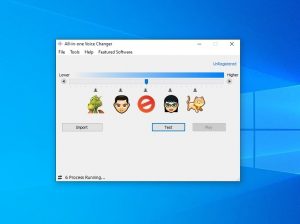
The one unmissable feature of this voice changer software application is the wide range of voice-altering options that you get. The app is designed with multiple platform’s, with each platform boasting various options to modify their voice.
All-in-One Voice Changer works incredibly well with Skype. However, you can likewise integrate it with other chatting and streaming platforms, such as Yahoo and QQ International. The very best part is– the software application is complimentary, hence more accessible.
5. AV Voice Changer Software Diamond
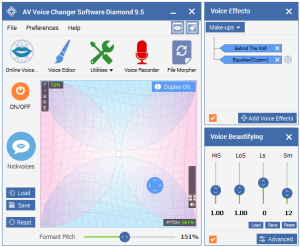
Like most voice-altering apps, Voice Changer Software Diamond is created to be exceptionally easy to use. To change your voice using this softwares, you merely adjust your voice choices or experiment with the many available audio impacts.
Another noteworthy feature of Voice Changer Software Diamond is that you can modify your voice’s different initial files elements. Examples consist of making the voice noise more womanly or giving it a higher pitch. The app is ideal for talking and live streaming and incorporates numerous chatting and streaming services, such as Skype, Twitch, and Discord.
6. Clownfish Voice Changer

Clownfish Voice Changer is compatible with Window’s and is mainly recommended for chatting online. This free real-time voice changer software come’s with an intuitive designs that makes it beginner-friendly.
Clownish is extremely suitable, and upon installation, the software application can work with any application provided the app uses a microphone. That enables you to execute different voice results, such as Robot, Alien, to discuss but a couple of. Some of the chatting and gaming platform’s that Clownfish Voice Changer supports consist of Hangouts, Viber, Steam, and Discord.
Clownfish Voice Changer likewise includes an inbuilt music and sound player function, enabling you to listen to your favorite audio files while streaming game’s or chatting with your pals online. Last But Not Least, Clownfish Voice Changer supports VST plugins, allowing users to generate new sounds and audio results.
7. SuperVoiceChanger
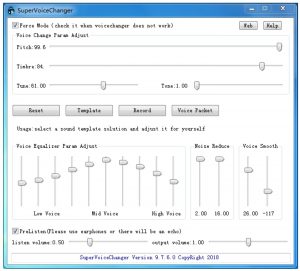
SuperVoiceChanger is a Windows-based voice changer app available for free and offers lots of exciting voice regulating functions.
You can use the applicaion to alter your voice on various talking and streaming platforms, including Viedo Platform, WhatsApp, Line App, and Skype. The software works with nearly any voice-over-IP apps that you can consider.
SuperVoiceChanger includes a list of pre-existing voices in its Sound Templates. A few of the voice effects that users can execute consist of Sweet woman, Little lady, Male voice, Heavy guy, and much more. The app is likewise super-friendly to utilize. All you require to do is activate it and then sit back as it changes any inbound audios.
8. MorphVox

Morph Vox is available in 2 different plans. There is the complimentary variation known as MorphVox Junior and the paid variation known as MorphVox Pro.
The freemium variation can be found in 3 voice options: a single male, woman, and kid voice. However, if you’re trying to find the best voice changing experience, you may consider the premium variation.
Morph Vox Pro changes your voice in real-time, makes it ideal for online interaction and video gaming. With Morph Vox Pro, you get two running modes, consisting of the Skinned Mode and the Studio Mode. The skinned mode enables you to choose your preferred voice from pre-existing choices and explore a few results. The Studio Mode offer’s a bit more flexibility, permitting you to change the pitch, voice timbre, etc.
9. MasqVox Voice Changer

Among the greatest drawcards of MasqVox Voice Changer is its ease of use, thanks to the app’s simplistic design and instinctive interface.
And like the majority of voice-altering apps we’ve examined here, MasqVox Voice Changer can alter your voice in real-time and is finest for both online gaming and chatting. You can also review Webcam software.
The software is developed with a number of human-based and cartoon-based voice effects, offering users a great deal of versatility depending upon the context of their interaction or gameplay.
Conclusion:
The app market teems with countless voice changer software, and choosing one item over another comes down to your specific preferences. However, when studying for the best voice changer applications, demand those that use various audio results while providing you to modulate your voice in real-time.
The post Top 9 Best Voxal Voice Changer Software You Can Use In 2024 appeared first on Techolac - Computer Technology News.
Page processed in 0.707 seconds.
Powered by SimplePie 1.3.1, Build 20121030095402. Run the SimplePie Compatibility Test. SimplePie is © 2004–2024, Ryan Parman and Geoffrey Sneddon, and licensed under the BSD License.
